Items tagged with 'animals'
Today's moment of bird

Margaret sent along this pic: "I saw this on Lark Street [Tuesday] between Clinton and Sheridan streets. Awesome urban hunter. Poor squirrel."
We've been surprised how often we've seen hawks hunting for squirrels in various Albany neighborhoods. Two years ago a hawk swooped right by while we we were walking along Myrtle Ave in Pine Hills, narrowly missing a squirrel in the street. But on two other occasions we've seen hawks successfully grab their prey.
Seeing that happen always instills a sense of awe at the speed and silence involved -- mixed with a tiny bit of "hmm, maybe next time it's me."
If the hawks and crows ever join forces, it's over.
Also: Someone really should have explained to the bird that Hawk Street is a few blocks over.
(Thanks, Margaret!)
Bat in the house? Capture it.
A state Depatment of Health video about how to capture a bat in a home.
From the folder marked "flying mammals and did you just see that... no, over there... oh, crap" and an Albany County press release:
Albany County Executive Daniel P. McCoy today is reminding residents to protect themselves from rabies by safely capturing any bat found in their home and bringing it to the Albany County Department of Health to have it tested for the disease and avoid any unnecessary vaccinations.
The County Department of Health has received multiple calls in recent months from residents concerned about potential exposure to rabies due to contact with bats, which is typical during the spring and summer months. ...
County residents are encouraged to use the below steps to safely capture any bats in their homes so they can be tested for rabies in a lab. If you are unable to trap it, you should be vaccinated at the Albany County Department of Health at 175 Green Street, Albany, NY 12202.
• Use caution
• If indoors, close all windows, room and closet doors, turn on the lights and wait for the bat to land.
• While wearing heavy gloves approach the bat slowly and carefully and cover the bat with a pail, coffee can, or similar container.
• Slide a piece of cardboard or lid under the container to trap the bat inside and tape the container shut.
Residents can "batproof" their home with polypropylene bird netting, fly screening, sheet metal, wood or various caulking compounds to close or cover openings that allow entry for bats to roost. House bats can pass through crevices as thin as a pencil.
As the press release notes, a small percentage of bats have rabies, but it's hard to tell which ones do by appearance and the consequences can be serious.
No. No. No. No. No. No. No.
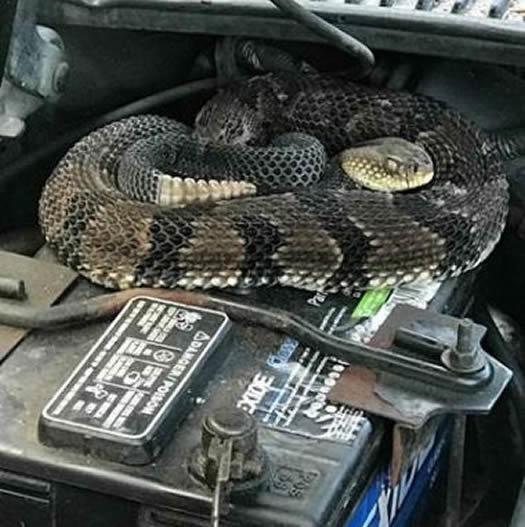
And to repeat: No. Nope. No. No. No. / photo: NYSDEC
Tucked in at the end of a state Department of Environmental Conservation digest of agency police officer encounters -- titled "Strange Rattle in the Engine - Delaware County":
On June 11, Lt. Nate Ver Hague and ECO Mark Vencak responded to a complaint of a rattlesnake resting on an engine block in the town of Hancock. The complainant told them that he had opened the hood of his car to jump start the vehicle and heard the distinctive rattle of a snake. He backed away and saw a large rattlesnake resting in the center of the engine block. Disturbed, the snake slithered over to the battery and curled up there. The officers confirmed the snake was a timber rattlesnake seeking shelter. ECO Vencak carefully extracted the snake from the engine compartment as Lt. Ver Hague untangled the tail wrapped around part of the engine. The officers released the snake nearby, next to several large boulders - a much more snake-appropriate habitat.
Why did it have to be snakes.
Timber rattlesnakes are New York State's largest venomous snake -- here's the DEC fact sheet on them. ("Timber rattlers impress one as being very stocky..." Hey, no judgements.) And here's a somewhat old DEC map of their distribution around the state. Their populations are mainly clustered in the southeast part of the state from the southern Catskills to the state border, though there are also some populations near Lake George and Lake Champlain.
All freaking out aside, snakes are an important part of ecosystems, often acting as predators on rodent populations. And New York State is home to 17 species of them, according to an info page from SUNY ESF. Three of those species are venomous -- "All three are uncommon."
[via @GannettAlbany]
Noted: Bears can now open car doors
The video embedded above was posted on the I Love Old Forge Facebook page this week. And, yep, that's a bear opening the doors of a minivan. There's a second video where the cubs mosey on out and into the van to explore.
Something that's obvious from this video: The bear uprising is approaching and a full on Planet of the Bears situation awaits us.
Seriously, though, bears are intelligent, curious, motivated, clever creatures. And they have collectively learned how to how operate car door handles during the last 10-15 years. From a Guardian article last year about bears opening doors in Yosemite:
According to Kirsten Leong, an expert in animal/human interactions and behaviours at the national parks service, the ability to open car doors is the latest in a long line of adaptations by bears to the presence and behaviours of humans. "They learn very quickly, if there's a reward, how to get that," she said. ...
Recommendations for good puppy classes?

It's hard to believe Otto was ever this tiny. He's 10 years old now!
Heather emails:
I am hoping to get some help from the AOA community on suggestions for puppy classes. I've just adopted a four-month-old puppy and know training is needed for both of us. The person who was highly recommended the last time this was asked in 2012 has since retired (Jody Diehl) and am wondering if there are other trainers who fill that void. I'm looking for someone who does positive reinforcement training instead of other methods (choke/slip collar).
Props to Heather for seeking out this sort of training. It can make a big difference -- for both dogs and people. A well-socialized (and exercised!) puppy that gets good training often ends up being a calm adult dog with good manners.
Got a suggestion for Heather and her pup? Please share! And a sentence or two about why you're recommending a trainer or place can be helpful.
The State Museum coyote is free

The coyote ahead of its release back into the wild. / photo: NYS DEC
Good news: The state Department of Environment Conservation says the coyote removed from the State Museum terrace Tuesday has been released back into the wild. There's a photo and video from the release below.
DEC says biologists at the agency's Wildlife Health Unit in Delmar checked out the coyote before the release Wednesday morning and concluded the animal was in good health.
As we noted yesterday, it's not all that surprising that a coyote would turn up around the Empire State Plaza -- they slip through urban and suburban areas often. But finding one hanging out in a place like that during the day is odd. So what happened?
There was a coyote at the State Museum
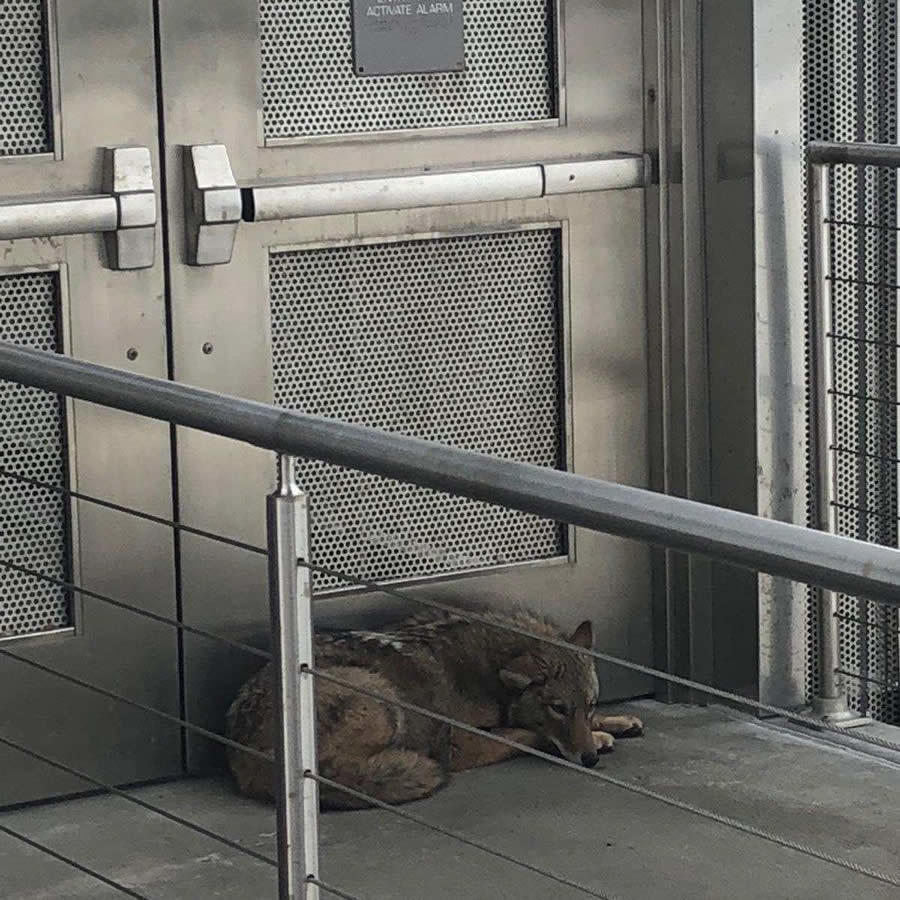
A photo posted by NYS Police on Twitter Tuesday.
A thing that happened Tuesday: A coyote -- an actual, living, wild coyote -- found its way up onto the terrace of the State Museum around noon.
State Police responded, and in turn called in the state Department of Environmental Conservation. DEC said that wildlife technicians tranquilized the coyote and took the animal to the agency's wildlife lab for evaluation. A DEC police lieutenant told the media it's not clear if the coyote was sick, but it had been become trapped and was scared. [@nyspolice] [@NYSDEC] [@bern_hogan]
Let's hope the coyote avoids the usual ending to the wild animal story arc. (RIP, Runaway Bison and Albany Bear.)
Coyotes among us
That a coyote would show up around the State Museum -- or anywhere in Albany -- is actually not that surprising. That it would end being noticed is more so.
Moose spotting
The state Department of Environmental Conservation is doing another aerial survey of the moose population in the Adirondack Park. And, of course, there are photos -- that's one of them above (more at the link).
See also: DEC's Flickr gallery of moose photos.
DEC says that early results point to the moose population being about 400 in the park.
Here's an info page on moose in New York, along with details about how to report a moose sighting.
By the way: moose are very big and strong and should be given plenty of distance.
Earlier:
+ There's a moose... and there's a moose... and there's a moose...
+ Mesmerizing moose
The Wild Birds of New York

Blissfully removed from pretty much everything going on...
Check out this 1912 book Wild Birds of New York. It includes some lovely illustrations -- we've clipped a few as a samples (see below).
The book was the work of Chester A. Reed, who developed the idea of a field guide. (This particular book was released in conjunction with the Mohonk Mountain House.) And though he died at just 36 years old, he had a prolific career, publishing 24 books.
The crows -- and crow trucks -- are returning to Albany
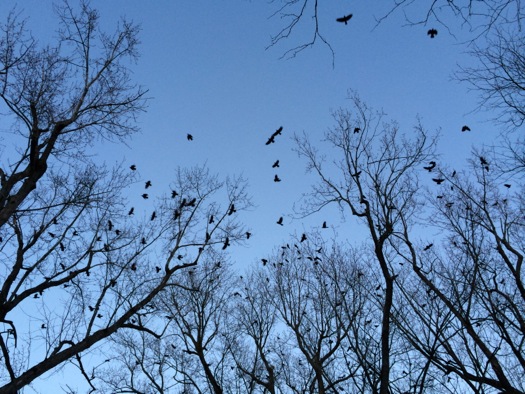
The cold nights arrive. The leaves fall. And the crow dispersal trucks migrate back to the city of the Albany.
Identifying information for this species and its seasonal visits, from a city press release:
The dispersal will take place in the areas surrounding Hackett Blvd. and Sheridan Blvd. in Albany. The City of Albany requested assistance to scatter the crows because of their droppings and the ruckus they create.
The non-lethal dispersal will be conducted by wildlife biologists from the Animal and Plant Health Inspection Service, Wildlife Services, part of the U.S. Department of Agriculture. They will be driving marked vehicles and wearing uniforms and a yellow safety vest marked "USDA Wildlife Services."
The work will be repeated at two-week intervals throughout winter where roosts develop.
The non-lethal methods used to disperse crows include pyrotechnics, spotlights, non-harmful lasers, and recorded crow distress calls that are amplified. Several of these methods produce loud noises and flashing lights similar to sirens and fireworks that frighten birds and may be heard or observed by local residents.
Residents are strongly encouraged to place household trash in containers with lids to discourage crows from feeding. Residents may also use bright flashlights to disperse crows roosting in trees.
Look for the first sightings of the trucks in the evenings of November 20 and 21. They can easily be spotted with the naked eye, no binoculars needed. You may also learn to recognize their distinctive call if you listen for them.
Earlier:
+ A dossier on our crow invaders
+ A seasonal farewell to the crows
A look around the Mohawk Hudson Humane Society's new animal care center

The Mohawk Hudson Humane Society officially opened its new animal care center in Menands Wednesday. The newly-constructed $7 million project is 32,000 square feet -- about 50 percent bigger than the old center -- and a big step up in amenities.
The org could use the space -- its almost 50 staff members and hundreds of volunteers helped facilitate 3,776 pet adoptions last year, in addition to providing services such as spaying/neutering, dog training, and the Safe Haven program for the pets of domestic violence victims. The new facility can provide a temporary home for up to 200 cats at a time, along with 87 dogs, and an assortment of other small animals.
Here's a look around the new building...
Checking in on the Tivoli Preserve Community Farm sheep
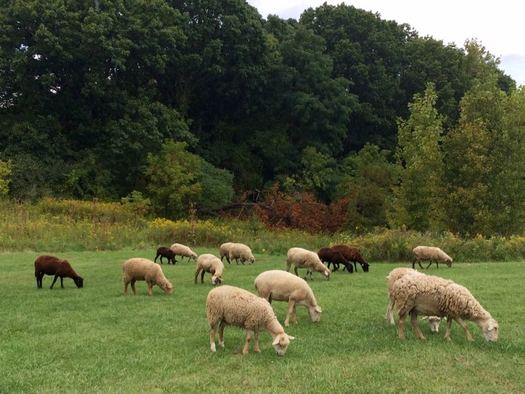
Yep, this is the city of Albany.
Among the newest residents of Albany's Tivoli Lake Preserve: sheep.
The small flock is there now as part of the Tivoli Preserve Community Farm project. The goal is to build a working farm and community programs in the park on the north side of Albany -- and there's been a lot of progress in recent months.
"It's just moving really quickly with help now," said Melissa Parade, the founder of the farm project, when we stopped by last week. "It feels really good."
Here's some quick follow-up on what's happening. And a lot of sheep pics.
The Cohoes Mastodon Park
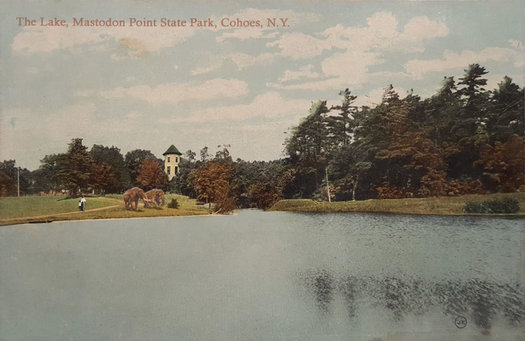
A vintage postcard for the park. / image: Matt Malette/Albany Archives
It's Other Timelines week on AOA, in which we'll be looking at alternate histories of this place, about big and small things that did or did not happen.
This year marks the 110th anniversary of the official formation of the Cohoes National Wildlife Refuge -- or, as most people here call it, the Cohoes Mastodon Park.
So we thought it'd be interesting to talk with Laura Claverack, manager of the refuge, about the history of the park, charismatic megafauna, and what the future holds for the park's population of mastodons.
The return of the blue snowflakes
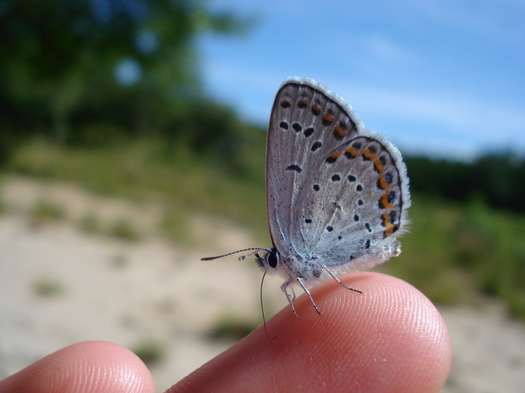
The Albany Pine Bush is an unusual example of an inland pine barrens, and it's one of the few homes to an unusual inhabitant: The tiny, beautiful -- and endangered -- Karner Blue butterfly. And it's making a comeback.
The Albany Pine Bush Preserve Commission announced Thursday that conservation efforts in recent decades have apparently had a big effect on Karner Blue populations in the Pine Bush. In 2007, the preserve was estimated to have fewer than 1,000 of the butterflies. And in 2016: more than 15,000.
Eagle eyes
DEC Wildlife staff recently banded a #baldeagle chick at a new nest in Schoharie County: https://t.co/5DCLDPNJDj #WildlifeWednesday pic.twitter.com/V1aIvULlqb
— NYSDEC (@NYSDEC) June 7, 2017
And now a short video clip of a bald eagle chick in Schoharie County that the state Department of Environmental Conservation posted on Twitter today because it's a short video clip of a bald eagle chick.
The chick was recently banded as part of a conservation program. DEC figures there are now more than 400 nesting pairs of bald eagles in the state. The birds were almost entirely gone from the state by the 1960s, but a program that started in 1976 relocated eagles from other states and helped reestablish populations here.
A good place to spot them in this area is along the Hudson River, at sites such as Peebles Island or Schodack Island.
Turtle time
 The state Department of Environmental Conservation would like to remind you that "the state's native turtles are on the move in May and June seeking sandy areas or loose soil to lay their eggs" -- and to urge people to watch out for them while driving. From a "What can I do to help?" list:
The state Department of Environmental Conservation would like to remind you that "the state's native turtles are on the move in May and June seeking sandy areas or loose soil to lay their eggs" -- and to urge people to watch out for them while driving. From a "What can I do to help?" list:
+ If you see a turtle on the road, please try to avoid hitting it with your car. Do not swerve suddenly or leave your lane of travel, but take care to avoid hitting turtles while driving to "give turtles a brake".
+ Be on the lookout for turtles and slow down, especially on roads near rivers and marshy areas.
+ If you see a turtle in the road or shoulder and you can safely stop your vehicle and approach the turtle, please consider moving it to the shoulder on the side of the road in the direction it is facing.
+ Picking the turtle up by its tail may frighten or injure it. Most turtles, other than snapping turtles, can be picked up by the sides of its shell.
+ Use extreme caution when approaching snapping turtles. You could:
+ stand watch as she finishes crossing,
+ pick her up at the rear of the shell near the tail using both hands, or
+ slide a car mat under the turtle to drag her safely across the road. See a video of how to help a snapping turtle cross the road (leaves DEC website).
+ Do not take the turtle home. All turtles native to New York are protected by law and cannot be collected without a permit.
There are 11 native species of land turtles in New York, according to DEC, which says the populations of each are in decline.
APD: Somebody is killing geese at Buckingham Pond
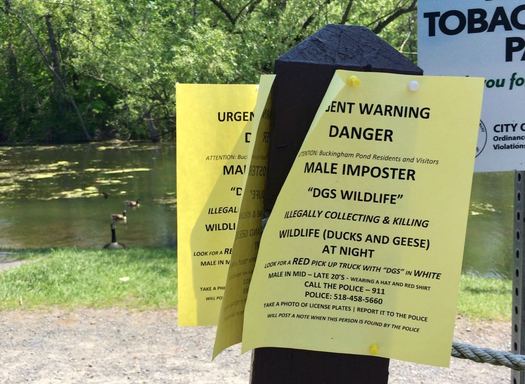
Updated Friday morning with comments from the APD spokesman.
So, this is weird... From a message from James Brooks in the Albany Police Department's Community Services Unit, distributed Thursday in an email from the Buckingham Lake Neighborhood Association:
APD has confirmed sightings of an unknown person killing geese that reside at Buckingham pond. Killing Canadian Geese is in violation of Federal Fish/Wildlife and NYS EcCon Law.
I ask that everyone keep a lookout to anyone who is in close proximity of these animals.
It is possible that the suspect is a white male dressed in a blue uniform operating a red newer model pick up with the lettering "DGS Wildlife" on the side.
If you see this suspect or vehicle at or about the park area notify the police immediately.
There are also flyers at the pond near the playground with similar info. That's one of them above.
Pup. Pup. Pup. Pup.
A red fox with her pups at their den in Canandaigua, NY. #WildlifeWednesday pic.twitter.com/GCkwzSoKtP
— NYSDEC (@NYSDEC) May 10, 2017
Not local exactly, but... awwww.
The state Department of Environmental Conservation shared this video clip on Twitter yesterday of red fox pups Canandaigua. The video was captured by a trail camera set up by Dennis Money. DEC also posted a bunch of still photos of the pups on its Facebook page -- you can see them getting bigger across the photoset.
Here's DEC's info page on red foxes. The agency reports that the animals are known to be in almost every county in the state, though their populations are under pressure from coyotes. "Expanding coyote populations (a potential predator of red fox) have pushed red fox further into residential areas in recent years."
Earlier: Coyotes in Albany
It's a hoot
Noted: The state Department of Environmental Conservation has an Instagram account.
It includes many good photos of birds (owls) and other animals (moose) from around the state.
That is all.
Coyotes in Albany
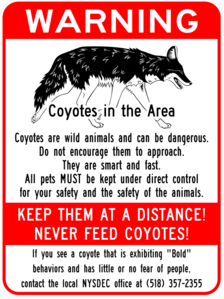 The city of Albany announced Wednesday it's posted coyote warning signs in the area of the Capital Hills golf course and Normanskill Farm following word from residents of recent coyote sightings. (The properties are adjacent to each other along the Normanskill on the city's southern edge.)
The city of Albany announced Wednesday it's posted coyote warning signs in the area of the Capital Hills golf course and Normanskill Farm following word from residents of recent coyote sightings. (The properties are adjacent to each other along the Normanskill on the city's southern edge.)
That's a sign image the city distributed. From a city Department of General Services press release:
Residents and dog owners should be mindful of coyotes when walking dogs in the neighborhood and letting dogs out in their yards. Coyotes are wild animals and they can be dangerous. Do not encourage them to approach or feed them. If you bring your pets to Capital Hills they MUST be kept under direct control for your safety and the safety of the animals.
If you see a coyote exhibiting "bold" behaviors and showing little or no fear of people, contact the local New York State Department of Environmental Conservation at 518-357-2355.
As we've mentioned before, coyotes -- specifically eastern coyotes -- have been moving into New York over the last century and seemingly popping up more frequently in this area in recent decades. The Pine Bush is a hot spot for them, and as the city noted today, they show up at Capital Hills, too. (Otto and a friend saw a coyote there one time and it was very exciting.)
Today's moment of winter
One of the cool things about woolly bears: They're able to freeze and thaw over the course of a winter -- and still survive.
Oh, and the myth/tale/conjecture about woolly bears being able to predict the severity of a winter? It started in the Hudson Valley.
Early morning swim
In other news: Squirrels can swim. And this squirrel was swimming in Washington Park Lake Saturday morning as the fog lifted.
In other other news: WHAT?
(Thanks, Laura!)
Caw. Caw. Caw.

With the return of cold weather, the huge flocks of crows that roost in urban areas have also show up. And once again there is an effort to disperse them.
The USDA trucks are set to start rolling through the city of Albany November 16 and 17 in the late afternoon and early evening. From a press release:
The non-lethal dispersal will be conducted by wildlife biologists from the Animal and Plant Health Inspection Service, Wildlife Services, part of the U.S. Department of Agriculture. They will be driving marked vehicles and wearing uniforms and a yellow safety vest marked "USDA Wildlife Services." The work will be repeated at two-week intervals throughout winter where roosts develop.
The non-lethal methods used to disperse crows include pyrotechnics, spotlights, non-harmful lasers, and recorded crow distress calls that are amplified. Several of these methods produce loud noises and flashing lights similar to sirens and fireworks that frighten birds and may be heard or observed by local residents.
Residents are strongly encouraged to place household trash in containers with lids to discourage crows from feeding. Residents may also use bright flashlights to disperse crows roosting in trees.
The crows can cause problems, as the press release notes, "because of their droppings and the ruckus they create." But we've come to appreciate their presence in winter -- they make the city feel more alive somehow. And there's some beauty in watching the flocks cross the sky at dusk.
Also: Crows are very smart. And maybe having a good relationship with them will pay off during the inevitable avian uprising.
Dog power

For dogs. Or sheep. / photo via State Museum
Last week we mentioned the State Museum's upcoming "Kids Curate" exhibit, for which kids can vote online about which items like they'd like to see featured.
And among those items was one that caught our eye: a treadmill for dogs. Apparently other people found this interesting, too.
So, here's a little bit more about that dog-powered treadmill.
Animal walk-and-talks at the Pine Bush
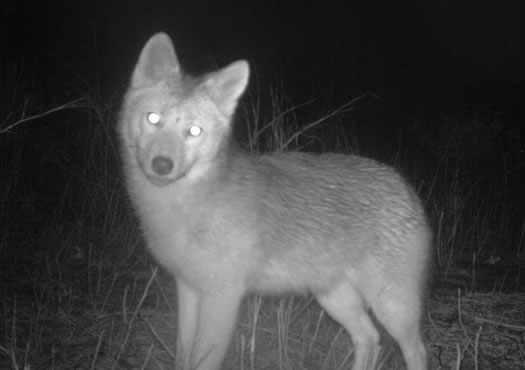
This photo was captured by a camera trap in the Pine Bush a few years ago.
There are all sorts of animals that either live in, or make their ways through, the Albany Pine Bush: coyotes, porcupines, foxes, fishers, deer, and so on.
The Albany Pine Bush Discovery Center has a bunch of family-friendly talk-and-walk programs about these animals coming up over the next month...
Today's moment of wildlife
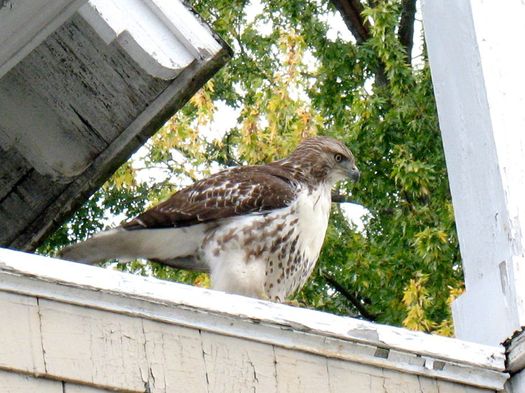
While walking along Myrtle Ave near South Main Ave in Albany Monday afternoon, we heard this faint whooshing sound and then looked back to see this hawk swoop past, not more than a foot away, as it tried -- unsuccessfully -- to pluck a squirrel from the street.
The squirrel took refuge under a parked car and let out a loud series of chirps, that we understand to mean, roughly translated: "HOLY @#$%^&* @#$%, DID YOU SEE THAT?!?!"
We had a roughly similar reaction.
After missing out on the squirrel, the hawk took a perch on a nearby second-floor porch where it promptly let loose an enormous poop on the house steps below. (If you live on Myrtle and encountered a strangely large bird turd on your front steps upon your arrival home Monday... now you know.)
A minute later the hawk took flight again, this time to check out some flattened squirrel remains in the street, stopping a car that was traveling along Myrtle. The hawk seemed unhurried by this situation, and after a few beats lazily took flight again to a nearby house gutter to watch the street again.
(A few pics after the jump, if you're curious.)
Today's moment of entomology
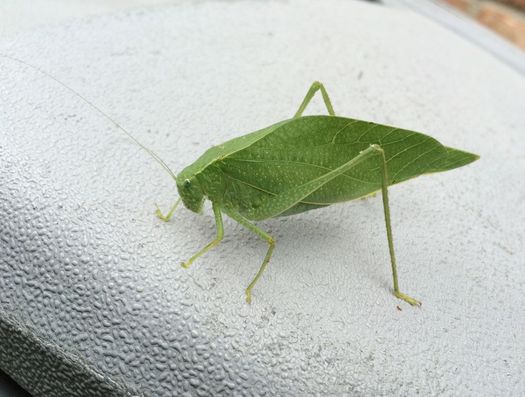
Continuing the recent insect theme: This leafy-looking fella was hanging out on garbage can this weekend.
And now some crowd entomology: Can anyone tell us what sort of insect this is?
Can you spot the coyote?
Coyotes are famously stealthy, able to move through urban and suburban areas while rarely being noticed by people. And in forested areas? Good luck.
The Albany Pine Bush Preserve posted this spot-the-coyote clip on Youtube this week that demonstrates how well the animals blend in. It's a quick clip. Have a look.
As it happens, coyotes are easier to spot when they stand and pose for the trail camera.
And if you're thinking, "Coyotes? Here?" Yep.
The animals have been moving into this part of the country over the last century. And there's research done by scientists who were/are at the State Museum that some of the coyotes in this part country are actually coyote/wolf hybrids (coywolves). A bunch of years ago one of the scientists, who studies urban wildlife, told us research indicated the Albany area is a "population sink" for coyotes -- they move in from more rural areas, but don't end lasting long because they get hit by cars.
Earlier this month in the Altamont Enterprise, Melissa Hale-Spencer wrote a really interesting article about coyotes in the Hill Towns.
Mohawk Hudson Humane building new facility

The
The org says the new animal care shelter will increase the space it has by 2/3, and it will allow housing for an additional 150 animals. It also says animal housing in general will be more spacious and comfortable for the animals.
The facility will also include expanded surgical space. Mohawk Hudson says that will allow it to perform more procedures and expand its free or low-cost spay and neuter programs.
The org says it's more than halfway to its fundraising goal for the project. There's info online if you'd like to donate.
Mohawk Hudson says some of its current facility date back to a century ago. They'll be torn down after the new building is finished, which is projected to be in summer of 2017.
Here are some large-format renderings and plans, if you're curious.
Your new career in urban shepherding
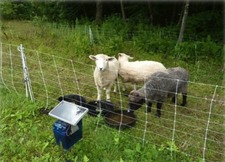 Filed under jobs that you could have: The planned project to graze sheep at Albany's Tivoli Preserve is in search of a shepherd. From the job listing:
Filed under jobs that you could have: The planned project to graze sheep at Albany's Tivoli Preserve is in search of a shepherd. From the job listing:
Aspiring shepherd wanted for the New York State Conservation Grazing (NYSCoG) Program. The shepherd will manage a flock of sheep at the 80 acre Tivoli Lake Preserve in Albany, NY. NYSCoG seeks to help young and beginning farmers gain access to land and infrastructure, and to begin grazing enterprises, while simultaneously assisting municipal, county and state governments in meeting vegetation management goals. The shepherd will receive the use of land, a flock of sheep, summer and winter housing for the sheep, fencing, winter hay, meds, and insurance, and will participate in grazing and pasture management planning. The shepherd will own the agricultural products of the enterprise (lambs, wool). Project begins in July 2016. Contact Dr. Gary Kleppel at Longfield Farm, 518 362 6576 or gkleppel@albany.edu
If Gary Kleppel's name rings a bell, you might remember that he's the UAlbany biologist who's been studying the use of grazing animals to combat invasive weeds. A bunch of years ago he ran a similar project at the city's Normanskill Farm. Over at the Times Union, Chris Churchill recently talked with him about the Tivoli project.
And, of course, you know about the city using goats to eat invasive weeds at the Loudonville Reservoir, a project that has continued this year.
About the Tivoli Preserve: The city of Albany has been planning a series of upgrades for the land on the north side of the city between the Arbor Hill and West Hill neighborhoods, and we hear there will be some specific details coming up in the next few months.
(Thanks, Melissa and everyone!)
earlier photo from Normanskill Farm courtesy of Gary Kleppel
Reservoir Goats II
Goats are back at Loudonville Reservoir! pic.twitter.com/6T2I0SVNKM
— Joe Coffey (@albanywater) June 7, 2016
We heard the tweet and pic embedded above weren't showing up for some people so here's the direct link.
Noted: The sequel to Reservoir Goats apparently has a green light.
(Joe Coffey is the commissioner of the city of Albany's Department of Water & Water Supply.)
Background from last year: Revisiting the reservoir goats
They haven't gone bald yet
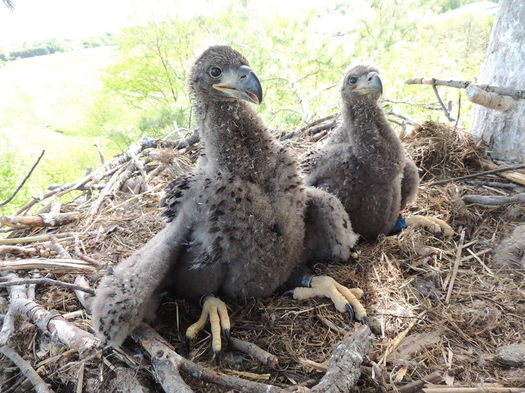
That pic above is a pair of bald eagle chicks that biologists from the state Department of Environmental Conservation recently banded in Albany County. From a DEC Facebook post:
Using band data, DEC biologists can track the birds age, movement and dispersal activity. The silver band is a federal ID band that is tracked by the U.S. Geological Survey (USGS) while the blue band is a New York State ID band.
From a distance you can sometimes see the colored band and at least know that that bird was born in New York. With a good spotting scope it's also possible to read the letter and two digit number code when the bird is perched. That data can be reported to DEC biologists and we can track their movement.
That link above includes more photos of the chicks and their nest.
Bald eagle populations had been almost entirely wiped out in New York State by the 1960s, in part because of an insecticide called DDT that weakened the shells of birds of prey. (Museum specimen collections such as the one at the New York State Museum helped biologist figure that out.) The pesticide was banned in the early 1970s. And in 1976 a program aimed at re-establishing bald eagles in New York State started relocating young eagles from other parts of the county, and it helped rebuild the population in the state -- and it's still growing.
Earlier on AOA: What, your job doesn't involve baby bears?
photo: NYS DEC
The Atlas of Inland Fishes of New York

There are 181 native and introduced freshwater fish species in New York State.
That's one of the many, many bits in a huge new catalog of the state's fish released this week as part of joint effort by the New York State Museum and the state Department of Environmental Conservation. It's the first such publication in three decades.
The book is available to download for free as a pdf from the State Museum website.
The Atlas of Inland Fishes of New York is pretty much exactly what it sounds like. It includes photos or illustrations of each of the state's different fish species, along with maps depicting where the fish have been found both in the past and present. As the atlas preface notes of New York: "its freshwater fish species represent one of the richest and most scientifically fascinating ichthyofaunas in the Northeastern United States."*
It's fascinating to flip through the atlas, gawking at some of the wildly-colored or shaped fish, and seeing how they compare or contrast with other similar fish. It's also interesting to see the geographic ranges of each species plotted -- how some species live only in a few river corridors, others are confined to specific watersheds, and others are pretty much everywhere.
And if nothing else, some of the names are great: Gizzard Shad, Central Stoneroller, Northern Redbelly Dace, Tonguetied Minnow, Rosyface Shiner, Bigeye Chub, Northern Hog Sucker, Threespine Stickleback, Pumpkinseed, Tesselated Darter, and so on...
* "Scientifically fascinating ichthyofaunas" really should be some sort of state marketing slogan.
Birding in Washington Park

A pair of wood ducks in the Washington Park lake this week.
The Capital Region is a very wild place -- and not just on Lark Street around 2 am.
Many colorful and fascinating birds call this place home. And spring is a migratory season for birds, a time in which a lot of our noisy old friends rejoin us from the south. If you take a closer look you'll get to know quite a few avian residents.
A great place to start birding is Washington Park, right in the middle of the city of Albany...
Baby farm animal season is here

It really is spring: The popular baby animal days at Hancock Shaker Village start this coming Saturday, April 16 and run through May 8. Adult admission is $20 / $8 for kids 13-17 / and free for kids 12 an under.
There's also a behind-the-scenes farm tour available, with "the opportunity to meet, hold and bottle-feed some of the newborn animals in a reserved area." Tickets for that are $27 or $30 depending on the day.
Hancock Shaker Village is a village, museum, and farm on a Shaker site in Pittsfield, Massachusetts -- about 40 minutes from Albany. A bunch of years ago, Dawn wrote about visiting for baby animal days.
Indian Ladder
Indian Ladder Farms in Altamont also has baby animal days. They're May 7-22 this year. Admission is $5 per child / free for an adult accompanying a child.
photo: Dawn Padfield
What, your job doesn't involve baby bears?
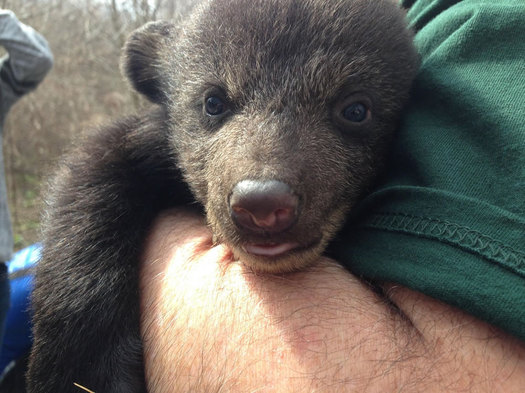
Oh, hello, there...
Filed under "jobs we didn't know existed" and "the cuteness is too much": Biologists with the state Department of Environmental Conservation have been visiting bear dens around the state to gather data about bear populations in New York. And that process involves (temporarily) removing bear cubs from the dens so they can be weighed.
This week the DEC posted photos from one of these recent den visits -- in Allegany State Park -- on its Facebook page. That's one of the pics above. A clip from the post:
The 173-pound sow was ear-tagged and fitted with a GPS tracking system collar. The collar collects GPS points at set intervals, then sends the location via text messages - so even bears are getting in on texting these days! DEC staff carefully monitored the sow's vitals during the process. The bandana is used to protect her eyes while she is immobilized.
During this time, the three cubs were ear-tagged and weighed only. There were 2 males and 1 female bear cub. The cubs were fairly small (3-4 pounds each) and healthy, probably meaning they were born in late January. After the work was done, the sow is placed back in the bear den with her cubs, where they will stay until the cubs are big enough to keep up with their mother in the woods, typically another few weeks.
DEC says it will be sharing more from these bear den visits over the next week.
Black bear populations in New York State have "increase[d] dramatically in number and distribution in recent decades," according to state's Black Bear Management Plan published in 2014 -- and there are now more than 6,000 bears estimated to be in the state, across large portions of upstate.
Earlier on AOA:
+ Don't feed the bears
+ There's a moose... and there's a moose... and there's a moose...
photo: NYS DEC
The Mr. Mo Project
 We hadn't heard of this local org, so maybe it's new to you, too: The Mr. Mo Project helps find homes for senior dogs -- and pay for their medical care, which can really add up. Blurbage:
We hadn't heard of this local org, so maybe it's new to you, too: The Mr. Mo Project helps find homes for senior dogs -- and pay for their medical care, which can really add up. Blurbage:
The Mr. Mo Project saves senior dogs from kill shelters across the United States. These dogs often come with hefty vet bills in order to regain their health so they can live comfortably in their forever foster homes. But, the Mr. Mo Project doesn't stop after covering their initial medical costs, they continue covering the medical needs of each dog in their program for the remainder of their life. This takes the financial demand of a senior dog, that often deters people from adopting them, out of the question and provides homes that give these seniors "The Best of Life for the Rest of Life."
The people behind the org are Chris and Mariesa Hughes from Clifton Park. Back in February they told News10 they would have to slow their adoption work because funding had become tight -- at that point they paying for the care of 75 dogs.
The website has info about adoptions, donations, and events.
(Thanks, Randal)
There's a moose... and there's a moose... and there's a moose...
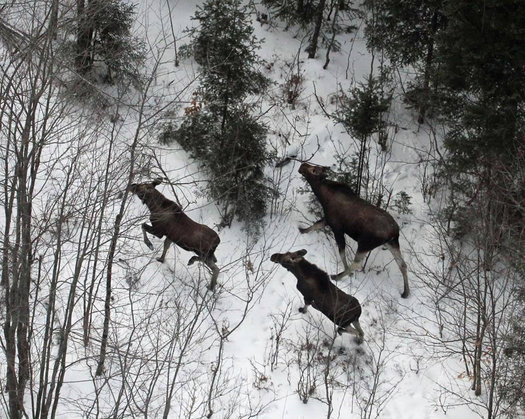
From the "Jobs You Didn't Know Existed, But Now That You Do, You Really Want That Job" file: The state Department of Environmental Conservation posted photos on Facebook today from helicopter survey flights of moose in the Adirondacks (that's one of the photos above). It's part of the agency's ongoing effort to study the state's moose population:
Nine additional cow moose were recently captured, collared and released as part of a multi-year moose study. There are now a total of 21 moose, including 18 cows, fitted with GPS/radio collars. Their locations are monitored weekly.
DEC wildlife staff also flew helicopter survey flights throughout the #‎Adirondacks to locate and observe moose. ...
In 2015, more than 165 moose sightings were reported by the public. The map indicates the towns in which moose were reported. DEC encourages people to continue to submit moose sightings and moose sign, (tracks, scat and scrapings) using the form at the bottom of the Moose web page
Here's a DEC map of public moose sightings in 2015. You can see they're largely concentrated in the Adirondacks. But the animals do show up in the Capital Region from time to time, especially in Rensselaer and Saratoga counties. There was that moose in Halfmoon a few years back, and the moose spotted at the Saratoga Race Course a few years before that.
DEC has reported in the past that scientists have collected evidence indicating moose populations in New York State have grown considerably during the last few decades -- from as few as 50 to 500 or more in recent years.
Earlier on AOA: Mesmerizing moose
photo: NYS DEC
How raising steer has changed the way I eat
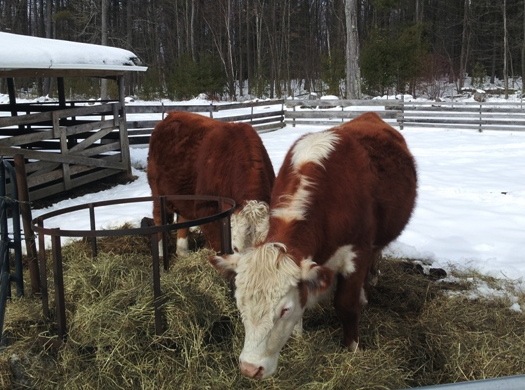
Back in the 70s and early 80s, my father-in-law raised animals. Steers, a few pigs, turkeys, and the freezer often had some hunted venison. Most of that had stopped by the time I started hanging around in the early 90s.
In December of 2003, the first case of mad cow disease was discovered in the US. A few weeks later at a New Year's party, my father-in-law asked, "If I did cows again, would you want in?"
Being a little too into all things food -- and a bit drunk -- I was game. And I'm glad I was. Because there is no doubt the experience has changed the way I cook and eat.
Mohawk Hudson Humane using facial recognition tech for dogs

The Mohawk Hudson Humane Society announced today that it's now using facial recognition technology as part of its efforts to reunite missing dogs and their owners. Specifically, the org is using a mobile app/service called Finding Rover. Press release blurbage:
Beginning November 11, 2015, all dogs entering Mohawk Hudson Humane Society will be registered on Finding Rover. When a dog is registered on Finding Rover, he or she is protected with revolutionary facial recognition technology. This 98% accurate, photo-matching technology is FREE and available for anyone to use on a smartphone or computer. Every dog that leaves the Humane Society, through a reunion or an adoption, can remain protected on Finding Rover when the pet-parent completes registration with an email. If that dog ever gets lost, his or her record will already be in the system, and identifying that pet will be a snap.
The service works in the other direction, too. You can download the app, scan a picture of your dog, and then if the dog is found by someone using the service -- Mohawk Hudson Humane, for example -- the dog can be identified.
The app is available for both iOS and Android.
We were curious about the background on Finding Rover and this NPR article filled in some of the details -- among them, how the company makes money. "For now, Finding Rover relies on investors for funding, but [founder John] Polimeno expects advertising in the app's social network for pet owners will pick up soon."
screenshots from Finding Rover iTunes store page
Mesmerizing moose
The good part starts at about 2:15 in the video.
Some real things are so fantastic that seem unreal.
We were thinking about that while watching this video clip of an enormous moose in the Adirondacks. The scene is from Helldiver Pond in the (apparently aptly-named) Moose River Plains Wild Forest and was posted by Youtube user Steve Barnum. It's from 2013 -- we just happened to come across it today via a @NYSDEC tweet. (Here's an earlier video clip.)
The state Department of Environmental Conservation estimated there were 500-800 moose in New York State as of 2010. The agency is currently study the state's moose population, in part via radio collars it attached to a dozen moose last winter.
Early fall is breeding season for moose in this part of the country, and they often end up roaming places they wouldn't otherwise go -- like... Troy, where a moose wandered this past September.
[via @NYSDEC]
Dog people outnumber cat people in New York
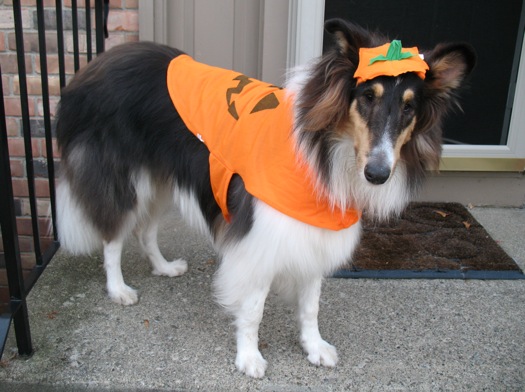
What sort of crazy people would dress their pet up in a costume...
A few bits from the Siena poll out today about pet ownership in New York State:
+ 42 percent of respondents said their household currently includes a pet (and 59 percent of upstate households).
+ Of pet households, 70 percent of respondents said they have a dog, and 46 percent said they have a cat.
+ Of dog households, 34 percent said they have two or more dogs. Of cat households, 41 percent said they have two or more cats.
+ "Forced to choose, do you consider yourself a dog person or a cat person?" Dog person, 57 percent. Cat person, 17 percent.
+ 24 percent of respondents with a pet said they dress their pet up in a costume at least once in a while.
+ 44 percent said they celebrate their pet's birthday at least once in a while.
+ 59 percent of pet owners said they talk to their pet as if it were a human being "all the time."
+ Estimates of how much spent on a pet each year: less than $500 - 27 percent | greater than $500, but less $1000 - 38 percent | at least $1,000 but less than $2,000 - 19 percent | $2,000 or more - 15 percent
Siena Research Institute says the poll was conducted September 1-28, included 800 respondents, and has a margin of error of +/- 4.3.
Revisiting the reservoir goats

A month ago the Albany Water Board announced it had hired (so to speak) five goats to clear a brush-covered section of the land around the city of Albany's Loudonville Reservoir.
A strip along the eastern edge of the reservoir had become choked with a tangle of trees, bushes, and vines -- and the slope of the land made it hard to work on, especially since debris would have to be kept out of the reservoir. Apparently it was difficult enough that the water board had trouble finding a contractor willing to take on the tricky task.
Enter the five goats from Heather Ridge Farm as a sort of test of the concept of goatscaping.
So, how'd that turn out?
Reservoir goats
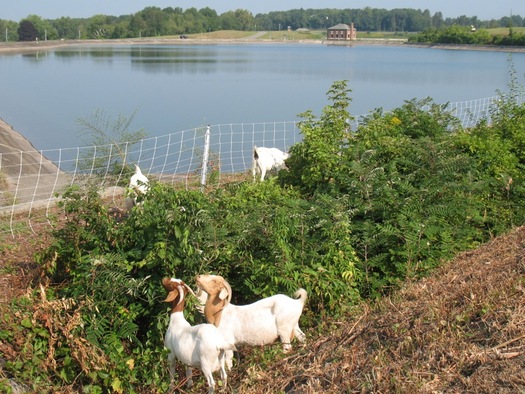
They're working.
It can be hard to hire a contractor. Sorting through all the various options. Coordinating calls and appointments for estimates. Trying to pick the best person.
And what if, as the Albany Water Board recently decided, the best person for the job is... a goat?
That time Saratoga had an ostrich farm

As one does in Saratoga.
Albany Archives pointed out today that Saratoga Springs had an ostrich farm back around the beginning of the 20th century. And something about this photo of people riding in an ostrich-drawn cart made us want to know more.
So, from Saratoga Illustrated: The Visitor's Guide of Saratoga Springs (1900):
on Geyser Avenue, about a half mile from the village, is one of the entertaining sights of Saratoga and is a unique feature. Here in an enclosure of about two acres are exhibited some of the finest specimens of African ostriches, Chinese golden pheasants, and English pheasants that are to be found in any country. Birds of all ages are here to be seen with various developments of plumage--from the slender pin feathers of the baby birds a few days old to luxuriant and brilliant plumages of the full-grown ostrich weighing 250 to 300 pounds each. Most of the ostriches have been brought to Saratoga from the celebrated ostrich farms in Florida, Arizona, and California, but some of the wee birds have first seen the light in the buoyant Saratoga atmosphere. Each pair of breeding birds is kept in a small corral of about 50 by 150 feet, and are fed on clover, hay, corn, oats, barley, etc. The younger birds roam in troops in larger enclosures, and a group of birds running with their wings out- spread, alarmed, it may be, at some unusual sight, is a most beautiful spectacle. The birds are all named, and some of the breeding birds bear the names of such distinguished magnates as President McKinley, Queen Victoria, Mark Hanna, Joe Wheeler, Napoleon and Josephine, Admiral Dewey and Miss Manila, etc.
Bear cub rescue
Because it's video of a bear cub being rescued. From the state Department of Environmental Conservation FB page:
[Tuesday] morning, Environmental Conservation Officer Anthony Glorioso was called to Windham Mountain Village (WMV) in the town of Windham where a bear cub was stuck in a tree high above ground. With the assistance of a local construction company's boom crane, Officer Glorioso went 65 feet up to get a better look at the situation. The officer attempted to free the cub but quickly saw his neck was stuck. Once the "v" was cut out of the tree using a chain saw, Officer Glorioso grabbed the cub and brought it into the bucket. As soon as the bucket came down, the cub ran back into the wooded area.
The Watershed Post talked with the townhouse development's property manager about the situation -- the bear had been stuck in the tree since Monday and had been calling for its mother.
Oh, hey, another seal in the Hudson River
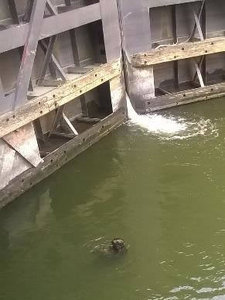 Speaking of unusual Hudson River creatures... the state Canal Corporation reported today that a seal -- yep, a seal -- made its way through the lock at the Federal Dam in Troy this weekend. From the Canal Corp's FB posting (link added):
Speaking of unusual Hudson River creatures... the state Canal Corporation reported today that a seal -- yep, a seal -- made its way through the lock at the Federal Dam in Troy this weekend. From the Canal Corp's FB posting (link added):
We had a special visitor at Lock C-1 (Halfmoon) over the weekend! A seal swam up the Hudson River and locked through the federal lock at Troy before visiting us on the Champlain Canal. Thank you The Riverhead Foundation for Marine Research and Preservation for your guidance as we worked to keep the seal safe.
That photo is also from the Canal Corp's FB posting.
As it happens, it's not really all that usual to see a seal in the Hudson River around Albany. A seal -- or maybe multiple seals -- have been popping up around Coxsackie the last few years. As you know, the Hudson is open to the ocean at its southern end, and the thought is that seals end up here after after following food up river.
(Thanks, Duncan!)
Earlier on AOA:
+ Odd and notable creatures of the Hudson River
+ That time whales swam to Albany
Odd and notable creatures of the Hudson River

Ahead of the Rail, River, Hudson II tour this coming weekend, we have a series of posts focusing on the Hudson River this week.
The Hudson River is many things:a thread through history, a transportation corridor, a scenic inspiration. But first and foremost it's a habitat for all sort of creatures.
Here are a few odd and notable inhabitants of the Hudson River...
River Week is sponsored by: Albany County Convention and Visitors Bureau, Downtown Albany BID, Dutch Apple Cruises, Harmony Mills, Hudson River Greenway, Nine Pin Cider, Sweet Sue's, and Downtown Troy BID.
Today's moment of bird

I'm a majestic, flying killing machine. What of it?
We spotted this bird chilling along a residential street in uptown Albany this week. At first it was on lawn, and then flew into a nearby tree on the power of a few wing beats.
The Twitter consensus this afternoon was that it's a red-tailed hawk, maybe a juvenile. (Want a better look? Here are larger pics.)
We see hawks around uptown Albany often, usually soaring high in the sky (though last fall we watched one pluck a squirrel from a lawn). It was really beautiful to see at close range.
Update: We sent the pics to State Museum curator of birds Jeremy Kirchman and he confirmed that it's a red-tailed hawk.
Going to the dogs
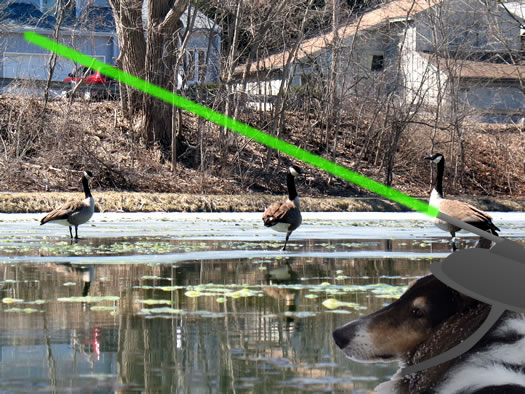
Dogs equipped with lasers might sound over the top. But the Canada goose is a persistent foe.
Green Island mayor Ellen McNulty-Ryan and her trusty pyrotechnic gun serve as one of this region's bulwarks against the invading hordes of Canada geese -- and crows! -- as highlighted by the Times Union again today. And the TU story prompted a range of reactions: tsk-tsking, tittering, Oh-Green-Island-ing, and ¯\_(ツ)_/¯.
Our reaction: Green Island should go to the dogs.
Really. The town/village should get some dogs. Border collies, probably.
Canada geese are a problem in many places, and people have tried all sorts of ways to scare off the birds. And there's research that indicates using dogs is the most effective option.
Goodbye, bison
here are the loose bison surrounding my car earlier pic.twitter.com/PoWYsppyEK
— Patrick Dodson (@patrickdodson) April 24, 2015The Daily Gazette's Patrick Dodson captured the best photos we've seen of Friday's bison episode, which didn't have a happy ending. [Daily Gazette] [TU]
At a press conference Friday afternoon, officials explained the reasoning for shooting the bison -- the short story: bison aren't really domesticated, and they can be dangerous. (The comments from the Cornell Cooperative Extension official about how the bison are different from regular beef cattle were interesting -- we're trying to find a link to the whole video.) [Capital]
____
(By the way: Patrick's also on Instagram, you know, in case you'd like to also follow him there.)
About those coyotes

This photo was captured by a camera trap in the Pine Bush about a year ago. / photo: Albany Pine Bush Preserve
Noted this week, from the state Department of Environmental Conservation press release:
If you see a coyote, be aggressive in your behavior - stand tall, and hold arms out to look large. If a coyote lingers for too long, then make loud noises, wave your arms, throw sticks and stones.
Just remember that words will never hurt them.
Coyotes? Here? Yep.
Albany, because beavers
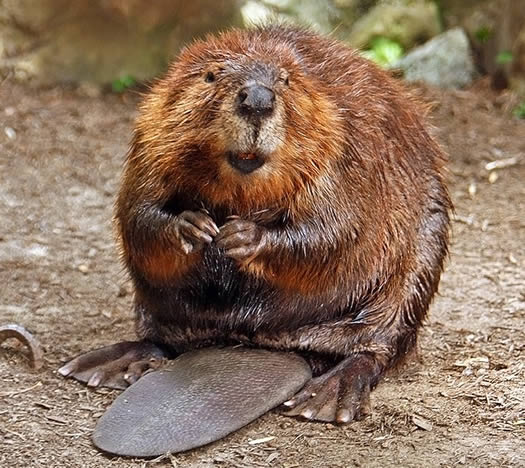
North America's largest rodent. And one of the reasons Albany exists. / photo: Steve Hersey via Flickr (CC BY-SA 2.0)
This past Tuesday was International Beaver Day. No, we didn't have marked on our calendar, either. It was a gross oversight on our part.
It's too bad that we missed the day because beavers played an important role in Albany's history. In fact, to some degree, Albany exists because of beavers.
Those beady little pink eyes
Odd wildlife of the day, an apparently ongoing series:
So there's an albino rat roaming downtown Albany. #UpstateAmerica cc: @alloveralbany @JimmyVielkind pic.twitter.com/7MxhvoTqeC
— Zack Hutchins (@Z_Hutch) December 16, 2014Maybe downtown Albany should have its own enclosed nature preserve.
Earlier on AOA: Behold, the white squirrels at play
Seneca White Deer
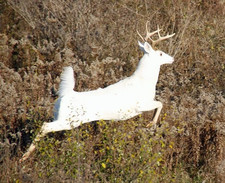 Odd New York State wildlife fact of the day: What's thought to be the world's largest population of white deer lives on a former Army depot in the Finger Lakes (map). Here's a photo gallery.
Odd New York State wildlife fact of the day: What's thought to be the world's largest population of white deer lives on a former Army depot in the Finger Lakes (map). Here's a photo gallery.
The relatively high numbers -- reportedly 200 white deer that are part of a larger deer population of 800 -- are apparently the result of the depot land being surrounded by a 24-mile-long fence during the 1940s. The original population had a small group of white deer and their numbers have increased over the decades.
From the website for the Seneca White Deer org:
The white deer found at Seneca Army Depot are a natural variation of the white-tailed deer (Odocoileus virginianus), which normally have brown coloring. The Seneca White Deer are leucistic, meaning they lack all pigmentation in the hair but have the normal brown-colored eyes. Albino deer, which lack only the pigment melanin, have pink eyes and are extremely rare. The Seneca White Deer interbreed freely with the brown deer in the former Depot and appear to share the habitat equally. Some of the white bucks show a flattening, or palmation, of the antlers, but are physiologically similar in most other ways.
The genetics of these deer have not been studied extensively, but a recessive gene for lack of pigmentation apparently prevents normal (i.e. brown) coloration of the hair. Management of the white deer within the former Depot increases the proportion of deer exhibiting the trait.
In an unprotected environment, white deer are usually easy prey for predators or hunters. The limited predators and controlled hunting on the former Depot have allowed the white deer to interbreed and increase in numbers for more than 60 years. Other white deer herds exist in protected environments, including white fallow deer in Ireland, but none of those herds are as large as the white, whitetail deer of the Depot.
There's been some tension over the last decade about what should be done with the depot. Seneca County officials have been looking at ways to possibly used the land for development, while preservationists have promoted the land -- and the deer -- as a possible park and tourist attraction. The TU's Brian Nearing had an article over the weekend about the latest state of the situation, including an attempt by preservationists to get the state involved. [NYT 2004] [TU]
The wild turkey

Historical illustration of the day, because Thanksgiving week: "The Wild Turkey," from Zoology of New York, published in 1844. Or: The New-York Fauna: comprising detailed descriptions of all the animals hitherto observed within the state of New York, with brief notices of those occasionally found near its borders, and accompanied by appropriate illustrations.
The book was the work of James Ellsworth De Kay, a medical doctor and zoologist with a somewhat colorful backstory, and artist John William Hill. The author and illustrator produced the work for the New York State Geologic Survey.
image via NYPL
In the winter of 14-15, the War on Crows resumed
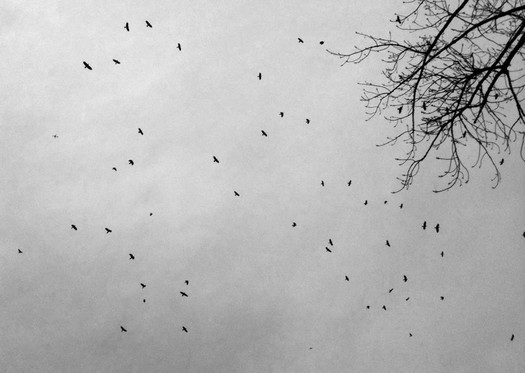
As winter gathers, so too will the crows in many urban locations around the Capital Region. And Albany has once again called in the feds and their fireworks to disperse the avian hordes.
From a city hall press release today:
The non-lethal methods include pyrotechnics, spotlights, non-harmful lasers, and amplified, recorded crow distress calls. Several of these methods produce loud noises and flashing lights (similar to sirens and fireworks) that frighten birds and may be heard or observed by local residents. The dispersal is done by employees of the Agricultural Department's Wildlife Services and the Animal and Plant Health Inspection Service who wear uniforms and orange vests marked "USDA Wildlife Services."
Residents are strongly encouraged to place household trash in garbage cans with lids to prevent crows from settling in the city. Residents may also use bright flashlights to disperse crows roosting in trees on their property.
The city cites the noise and droppings from the crows as the reason behind yet another campaign. And we get that -- nobody likes a huge amount of bird poop dropped in their neighborhood. But we're starting to get the sense these measures aren't necessarily working.
So, what else is there? Well... A group of USDA researchers reported a few year back that they had success using "effigies" -- that is, fake crows and, um, actual dead crows hung upside-down from trees -- to dissuade crows from roosting in an area.
It's becoming clear that none of us will escape the War on Crows unchanged. Maybe it's time to discuss a treaty.
Quoth the raven, furthermore: A little light reading from the Penn State Cooperative Extension on managing urban crow roosts
Earlier on AOA:
+ A seasonal farewell to the crows
+ A dossier on our crow invaders
Where the wild things aren't... yet
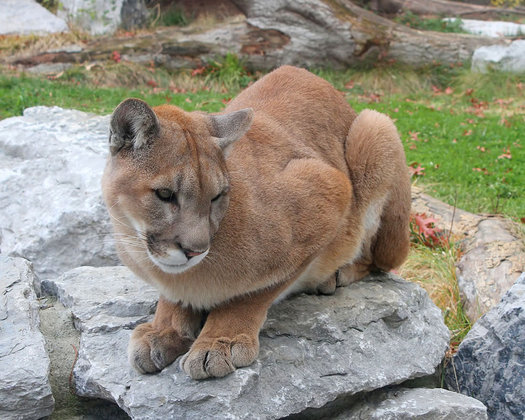
A mountain lion (cougar) in a zoo. / photo: Greg Hume (CC BY-SA 3.0) via Wikipedia
The reported mountain lion sightings near Cambridge in Washington County recently is a familiar story. [Post-Star]
Mountain lions!? Here!? In 2011 The US Fish and Wildlife Service declared that the eastern cougar had likely been extinct since the 1930s. Even so, there have been people -- naturalists, hikers, people drinking coffee on their decks -- who say they've seen one of the big cats in the eastern US since then. And the rather wayward journey of one of the cats through New York and into Connecticut a few years back just stoked those rumors.
After covering this topic a bunch of years ago for another outlet, we've thought this was one of those fun mysteries -- the kind of thing people hoped was true. That maybe our part of the world was a little more wild than we all thought.
Many parts of the Northeast have been going through an interesting environmental change over the last century in that they've actually been gaining forest land as former farmland falls back into being forested. As it happens, these once-again-spreading forests aren't exactly like the Northeastern forests of centuries ago -- the mix of trees is probably different. And they lack many of the big predators that disappeared through hunting and habitat loss. Or, at least, they have lacked those predators -- because that could be changing. [Science Daily]
This part of the State Museum is for the birds

State Museum curator of birds Jeremy Kirchman with a snowy owl specimen.
What's on display at any one time at State Museum is just small slice of all the items in the museum's collection. And because the State Museum is almost two centuries old -- it's the oldest state museum in the country -- there are a lot of things in that collection.
So we were happy to get the chance this week to get a behind-the-scenes look at the museum's large bird collection with its curator of birds, Jeremy Kirchman. He's giving a talk this Sunday about the passenger pigeon -- a current exhibit at the museum commemorates the bird's extinction a hundred years ago.
OK, let's get to the photo tour -- and a quick chat about museums as data sets, global warming, extinction, and some reasons to be hopeful.
Today's moment of summer
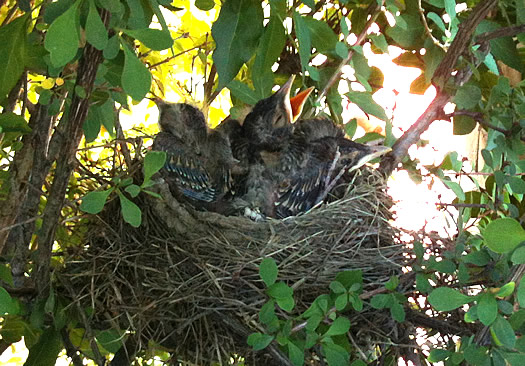
It's been fun catching a few quick glimpses over the last week as these baby birds grow.
At some point that nest is probably going to turn from cozy to crowded.
Hot? Try wearing a fur coat
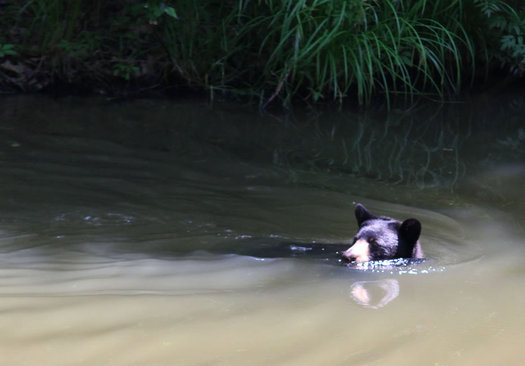
Here's a larger version of the pic.
Jeff sent along this photo of bear in the town of Sand Lake today: "This bear was hot and decided to cool off in our pond."
The temperature hit 90 degrees Tuesday afternoon, with a heat index of 96. That's, like, 115 if you're wearing a fur coat.*
(Thanks, Jeff!)
*OK, we might have made the second part up.
On tiger selfies
There's been some media hubbub the last few days after the New York State legislature passed a bill that would ban "tiger selfies" -- yep, exactly what it sounds like, apparently it's a guys-on-Tinder thing. (Because of course it is.) [NY Post]
As it happens, the the actual bill is aimed at prohibiting direct contact between the public and big cats (like tigers) at places such as "roadside zoo exhibitors" as a safety measure for people and a welfare measure for the animals. The Assembly sponsor, Linda Rosenthal, said she hadn't even heard of the tiger selfies until after the bill passed her in chamber. ] [CNet]
If this sounds like a Colbert Report segment, you would be right (embedded above).
Today's moment of spring
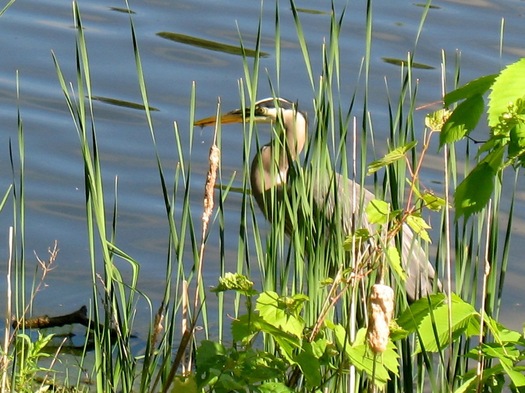
While walking the office dog today we spotted a heron fishing along one of the banks of Buckingham Pond in uptown Albany.
The sight was mesmerizing, watching the bird patiently track its target, pluck a fish from the water, casually consume its prize, and then take flight in a series of long, whooshing strokes. It was all a bit prehistoric -- like watching a modern dinosaur. (Which, it is, more or less.)
A few more pics if you're interested.
Related, but completely non-local: Over at the RadioLab blog last month there was a very interesting interview with an artist who creates renderings of dinosaurs based on scientific research and clues from modern animals.
The Albany bear falls to the ground
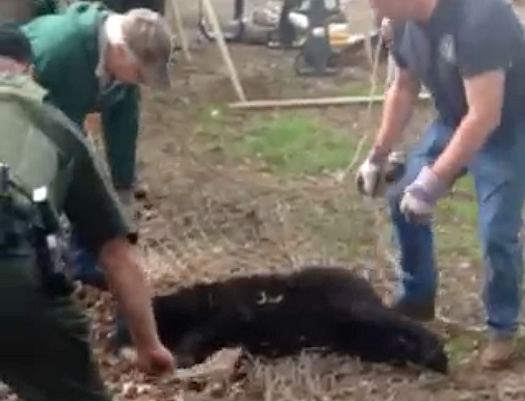
A still from a video clip shortly after the bear fell from the tree.
Updated 5:10 pm
The black bear that had been caught in a tree in Albany since Tuesday fell to the ground Wednesday just before 1 pm after being hit with tranquilizer darts. The state Department of Environmental Conservation reported later Wednesday afternoon that the bear had been euthanized.
A statement from DEC director of media relations Emily DeSantis:
The state Department of Environmental Conservation strives to relocate wildlife in situations where they enter urban and suburban settings. In this case, wildlife biologists determined this course of action is more humane and necessary to preserve public safety because of the bear's injuries and its history of returning to urban and suburban settings.
The video still above is from the scene just after the bear hit the ground. A witness sent the video to AOA -- the full clip is posted after the jump (thank you, Dawn). While not graphic, the video is a bit hard to watch knowing the context.
Yep, that's a bear, in Albany
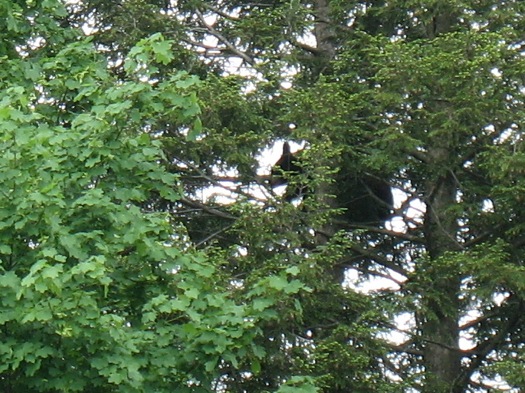
Update Wednesday 5:10 pm: DEC says the bear has been euthanized. Here's video of the bear after it fell to the ground, and a bit more about the timeline leading up to the situation.
Update Wednesday 1 pm: The bear is out of the tree and being taken to a DEC facility in Delmar, its future uncertain. [@HRViccaro - Daily Gazette]
Update Tuesday night: DEC says the bear has been identified as a nuisance bear and will be killed. [TU]
____
A young bear got caught in tree in Albany's Whitehall neighborhood Tuesday afternoon. Officers from the NYS Department of Environmental Conservation and the Albany Police Department had gathered to keep watch on the bear, which was shifting a bit in the tree but otherwise not moving.
Word was that the bear had been hit with a tranquilizer gun and officers were waiting for it climb down and/or fall out. (That's pretty much the standard procedure in these situations.) APD spokesman Steve Smith said they'd gotten the first call about the bear after a sighting in the Mt. Hope neighborhood on Albany's South Side this morning, but he had heard the DEC had been tracking it from Bethlehem.
The bear showed up in the tree between Rose Court and Clayton Place around noon (map). It was estimated to to weight less than 200 pounds, and it was high up in an evergreen tree -- maybe 60 feet.
What usually happens when a bear is captured in one of these areas: it's checked out by DEC and if it's in OK shape it's relocated to a more bear-appropriate habitat. (The process isn't always so happy if the bear has wandered into human populated areas on previous occasions.)
It's not all that uncommon for a bear cub to show up in Albany or more urban parts of the Capital Region.
Today's moment of spring
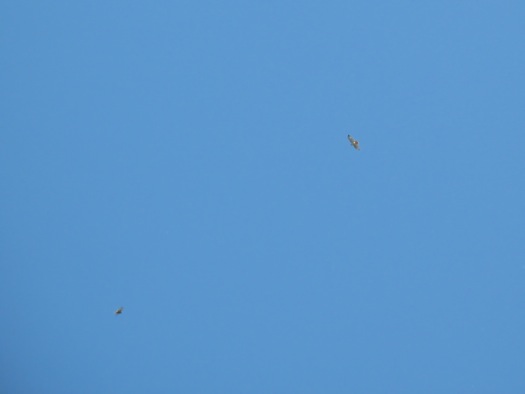
While taking a break today to watch the wispy white clouds slowly pass by we noticed these two hawks (?) coasting around the sky blue sky in uptown Albany.
Henry Loves Betty

Paula Matt with her dogs, Betty and Henry
Paula Matt really loves animals.
Growing up she had an imaginary dog named Josie, she works as a vet tech, and she just opened a pet boutique in Troy named Henry Loves Betty. The offerings are quite posh, with dog button-ups, candles for dogs, and loads of organic treats.
I was skeptical, but Matt insists it's all worthwhile.
Dog etiquette
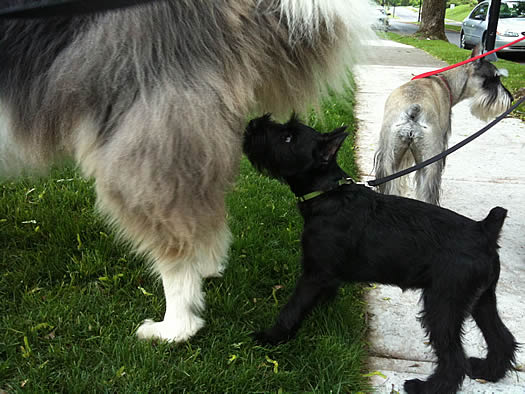
You know, it's usually a good idea to ask first before doing something like this...
Now that the snow is gone, once again evidence re-emerges -- perhaps "unthaws" is the better word -- that not every dog owner is as courteous as he or she could be. As Albany Common Councilwoman Leah Golby said today on Twitter of people who don't pick up their dog's poop: "You are giving us responsible dog owners a bad name!"
There are a lot of neighborhoods in the Capital Region that include a lot of dogs. And we think this is generally a good thing -- dogs are often a way for people to get to know each other. We've met a bunch of people in our neighborhood because of Otto.
As with any situation involving other people (and dogs), a little bit of responsibility on everyone's part can go a long way toward creating a more courteous environment. Also: We're all better off when people aren't stepping in dog !@#$.
So, based on things we've seen around town, here are a few thoughts on dog etiquette...
2013 was a good year for New York State bears. Well, it was for some of them.
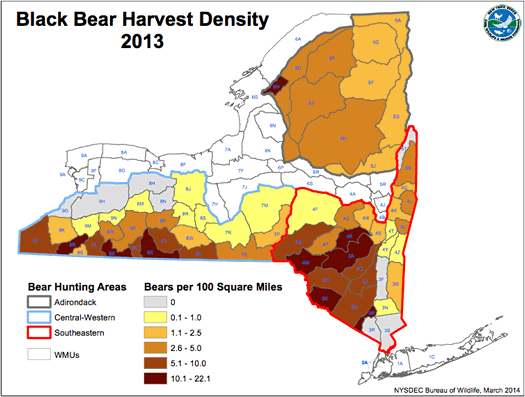
The good news, if you're a bear: The darker shaded parts of the state above probably are good habitat. The bad news, bears: Those are also the places hunters are looking to shoot you.
Hunters in New York State killed the second-highest number of bears on record in 2013, according to the state Department of Environmental Conservation. The total: 1,358.
The DEC released its "bear harvest" summary for 2013 today -- it's basically a recap of where hunters killed bears last year. A few bits:
+ The number of bears killed by hunters in the state has been trending upward over the last two decades. The average number killed from 1991-2000 was 722. Since 2001, it's been 1182 per year.
+ Hunters killed 35 bears in the Capital Region's core counties last year (Albany: 7, Rensselaer: 14, Saratoga: 14). That's up from 30 in 2012, and 26 in 2011.
+ DEC says the higher number of bears killed by hunters "reflect that bear populations have increased over the past decade." Apparently food for bears was abundant last year.And New York has "excellent bear habitat," according to a statement by DEC commissioner Joe Martens in the press release today.
+ The state has been opening more areas for bear hunting over the last decade -- including a large stretch of the area east of the Hudson from Westchester up through Washington counties in 2011. DEC says it's currently considering a plan to open all of upstate to bear hunting.
map: NYS DEC
Today's moment of spring

On Buckingham Pond. We're calling fowl.
Isn't that just like Canada geese, thinking they can walk on water.
They're such arrogant birds.
A seasonal farewell to the crows

From this past January.
A spring arrives (finally), it's about that time the large flocks of crows that hang out in neighborhoods such as uptown Albany and other spots around the area go... well, wherever it is they go in the summer. The flocks are regarded as nuisances -- see the USDA trucks that shoot noisemakers at them -- but over the last few winters we've come to appreciate them as chatty winter-time neighbors, a sign of life during the cold months.
Anyway, this is all a long of way saying that as the crowds of crows head off to wherever they're going for the season, we enjoyed this clip about the birds from a long ago David Quammen piece:
Crows are bored. They suffer from being too intelligent for their station in life. Respectable evolutionary success is simply not, for these brainy and complex birds, enough. They are dissatisfied with the narrow goals and horizons of that tired old Darwinian struggle. On the lookout for a new challenge. See them there, lined up conspiratorially along a fence rail or a high wire, shoulder to shoulder, alert, self-contained, missing nothing. Feeling discreetly thwarted. Waiting, like an ambitious understudy, for their break. Dolphins and whales and chimpanzees get all the fawning publicity, great fuss made over their near-human intelligence. But don't be fooled. Crows are not stupid. Far from it. They are merely underachievers. They are bored.
That clip is via Smithsonian mag, which had a post this week pointing out that crows understand water displacement.
As the crows leave and the ice melts, the Canada geese have returned. And they're rather rude. We'd take the crows over the geese any day.
Earlier on AOA: a few more items about crows
A lot of kids
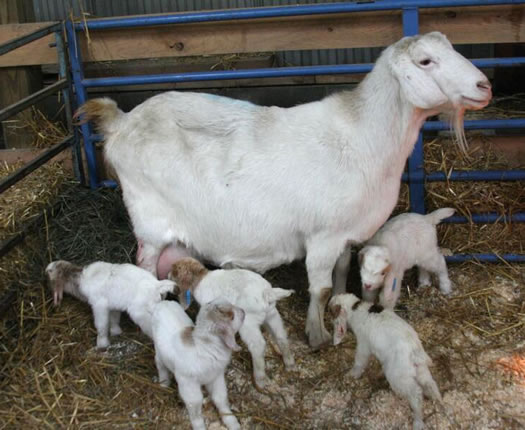
Today's moment of baby animals: These goat kids -- all five of them -- were born from the same mother this week at SUNY Cobleskill's livestock barn.
Apparently goat quintuplets are very rare. (Scientific reason: That much cuteness can't be gestated in one goat. It's just too much.) We now turn to the Daily Gazette's John Enger, who we believe has written the definitive goat miracle birth story (not paywalled):
This is [university livestock manager Donna] Cappadona's 15th year running the livestock program at the university. In that time, more than 400 goats gave birth. Before that she ran a goat farm in Perth. In all her years of witnessing the start of new goat lives, she never saw a set of quintuplets, and only once saw quadruplets.
By the time she got to the barn Tuesday morning, after an hourlong drive from her Perth home, all five kids were out in the world, cleaned up and doing fine. "You'd think they'd be small," Pinckney said, "with so many of them in there, but they're all pretty big."
By pretty big, she means 8 pounds or so each, all carried by a mother goat weighing roughly 200 pounds -- an impressive feat of strength beyond the surprising powers of fertility. When the goat quints reach age, they'll either join the college's herd or be sold to other farmers.
The article goes on to explain some the factors that may have contributed to this particular goat may ending up so very pregnant. (It involves hay.)
Also: The SUNY Cobleskill livestock barn is apparently open for tours from the public. Here are a few more details.
photo: SUNY Cobleskill
Today's moment of... almost spring

Hello there.
This calf was born this week at Gordon Farms in Berne. It's calf season there. Sarah Gordon -- her dad, Sandy Gordon, owns the farm, -- snapped the photo. She says they're expecting 22 calves on the farm between now and early April. The Angus-Hereford are usually 65-75 pounds when they're born.
Gordon Farms raises grass-fed cattle. (Their beef is available through FarmieMarket.) We got a tour a few years back, and visited the cows out in the pasture.
Baby animals. Spring must be near.
Today's moment of winter
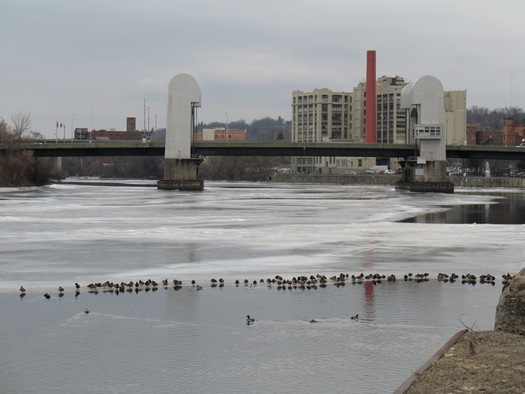
Quack. Quack. Quack.
While walking along the Monument Square site we noticed this group of ducks hanging out on a the edge of "pond" on the frozen Hudson River. They were just hanging out, chatting*, and paddling around a bit.
Here are a few more pics.
* At least, that's what it sounded like. We don't speak duck.
Trying to avoid the aporkalypse in New York
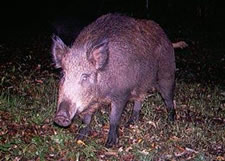 Over at the Watershed Post, Lissa Harris has an interesting article about the simmering wild boar problem in New York State -- and the escalating efforts to keep it contained:
Over at the Watershed Post, Lissa Harris has an interesting article about the simmering wild boar problem in New York State -- and the escalating efforts to keep it contained:
[I]t might not be too late for New York, according to the handful of state and federal regulators whose task it is to try to keep feral swine from getting established in the Empire State.
From Jan. 28 through Feb. 7, a helicopter crew from the U.S. Department of Agriculture (USDA) is surveying several areas known to be home to feral swine, including part of Delaware and Sullivan counties. If they spot any feral pigs on land they are surveying, and if the landowner has already given them permission, they will shoot the animals from the air.
Kelly Stang, wildlife biologist for the New York State Department of Conservation (DEC), said that to her knowledge, it's the first time in New York State history that government officials have set out to hunt animals by helicopter. But the USDA crew has flown similar missions all across the East Coast.
The main purpose of the helicopter flights is not to hunt the hogs, but to find out more about the wily animals and their movements across the landscape. With trees bare and snow on the ground, torn-up ruts in the earth left by foraging swine should be easier to spot.
"The crew that's doing it, all they do is aerial operations," Stang said. "The main goal is to survey -- to see if we can find any from the air, where are they, how many. If they do have the opportunity to shoot them, they will take that shot."
Most of the feral pigs in New York are Eurasian boars brought here to be hunted. It's now illegal to bring them into the state or breed them. And in 2015 it will be"illegal to possess, sell, distribute, trade or transport Eurasian boars in New York."
Feral pigs are causing significant problems in other states -- especially in Texas, which has apparently been fighting a losing battle in the "aporkalypse." A few years back it was estimated that wild pigs were causing $400 million in damages annually.
Earlier on AOA: Wanted, dead or live: feral pigs
photo: NYS DEC
Well, hello, there...

Here's a larger, uncropped photo.
The Albany Pine Bush Preserve captured this photo of a coyote with one of its camera traps recently. The way the coyote has its head cocked, it almost has this expression of "Huh, what it's that... (camera snap)."
The Pine Bush uses a handful of motion-activated camera traps to observe animals in the preserve, including foxes, deer, and turkeys.
Coyotes
You might be wondering: There are coyotes in this area, even in a place like the city of Albany? You bet. Coyote populations have been on the upswing since the 1990s. And though they're shy, they do show their face now and then. (The office dog and his friend ran after one at Capital Hills a few months back.)
Earlier on AOA:
+ Coy-something
+ Foxes and fishers and bears, oh my!
photo: Albany Pine Bush Preserve
Whooooo's that?
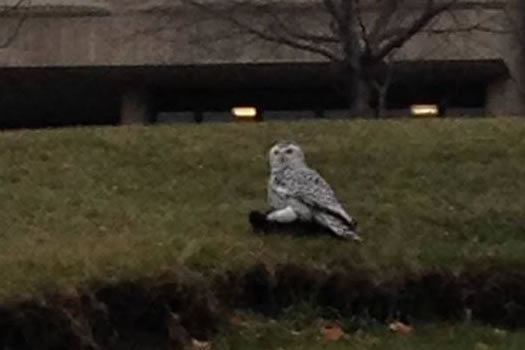
Wait a second, maybe we're just bystanders to an ongoing owl-crow war. That would explain a lot of things...
Spotted in Troy this week: A snowy owl taking down a crow. The photo, by John Cook, is from the RPI campus and was posted on EMPAC's Facebook.
Snowy owls are very cool birds -- but, you know, they don't typically show up here. At least, not traditionally. But for whatever reason, the last two winters have seen snowy owls popping up in all sorts of locations south of their usual range (the Arctic and Canada, in this hemisphere). [USAT] [Chicago Tribune]
So, why is this happening? From the Boston Globe this week:
"We don't know what's going on," said Kevin McGowan, an ornithologist who has spent 25 years at Cornell University's Lab of Ornithology. "There's no clear signal yet."
McGowan said the increased number of sightings could be a signal of something very good -- plentiful food leading to the birth of more of the birds than ever before -- or something very bad, such as climate change curtailing the food supply and forcing more owls to venture south to survive.
The visits have a caused a few problems. At the major NYC-area airport they were blamed for recent collisions with five airplanes, which had prompted the addition of the birds to airport kill lists. But the Port Authority reversed its decision and says it will now be capturing and relocating the owls. [NYDN] [NYT]
Gobble, gobble, gobble
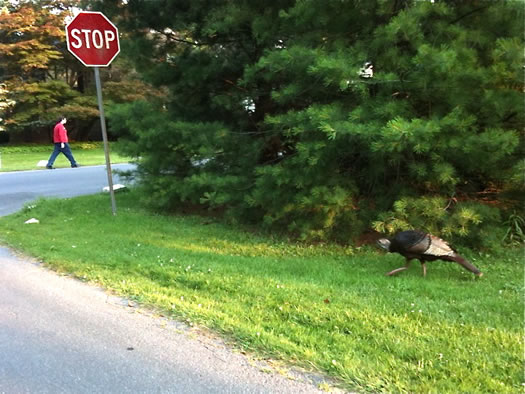
A wild turkey in Albany's Buckingham pond neighborhood in summer 2012.
The state Department of Environmental Conservation says wild turkey populations have declined in many parts of the state over the last decade. In an effort to figure out why, DEC is planning to capture some hens to fit them with ID bands -- and in some cases, satellite radio-transmitters. DEC is also asking the public to report wild turkey sightings via a survey.
It's estimated that the wild turkey population in New York State could be as large as 300,000. And it's not uncommon to see them around the Capital Region -- we've seen them a bunch of times in residential neighborhoods in the city of Albany. But turkey's weren't always so common here -- at least, at one time. From a DEC backgrounder on wild turkeys:
The wild turkey is native to North America. Turkeys were widespread when the Europeans arrived and may have predated the earliest human inhabitants. At the time of European colonization, wild turkeys occupied all of what is currently New York State south of the Adirondacks.
Turkey habitat was lost when forests were cut for timber and turned into small farms. The early settlers and farmers also killed wild turkeys for food all year round, since there were no regulated hunting seasons at that time. The last of the original wild turkeys disappeared from New York in the mid-1840's. By 1850, about 63 percent of the land in New York was being farmed. This trend continued until the late 1800s when about 75 percent of New York State was cleared land.
In the early 1900s farming began to decline. Old farm fields, beginning with those on the infertile hilltops, gradually reverted to brush land and then grew into woodland. By the late 1940s, much of the southern tier of New York was again capable of supporting turkeys. Around 1948, wild turkeys from a small remnant population in northern Pennsylvania crossed the border into western New York. These were the first birds in the state after an absence of 100 years.
The state's wild turkeys are descendants of those migrants from Pennsylvania.
In studying what's up with wild turkeys, the DEC shouldn't rule out that the birds have just decided to go back to school (you know, because of the economy). Back in September a turkey expressed interest in attending Mater Christi in Albany.
Earlier on AOA: Wild about turkeys
Ducky
More than 30 mallard ducks. A Saratoga Springs CVS (presumably the one near the park). Hijinks ensue.
The best line was probably from Gawker: "Terrifying Ducks Take Over a CVS in Laziest Birds Remake Yet."
[via Daily Gazette]
The Kinderhook Creature and other Monsters of New York
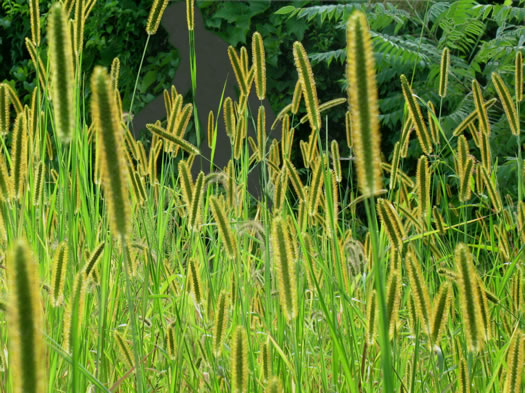
Did you see that?
Bruce Hallenbeck remembers watching Frankenstein with his cousin when he was just five years old. "I wasn't frightened... I was fascinated."
These days Hallenbeck's fascination with monsters extends into the real world. When he's not working with microfilm and genealogy at the New York State Library, Hallenbeck writes books about horror movies and what he refers to as "real-life monsters" -- monsters of the bigfoot and Loch Ness variety.
A few years ago Hallenbeck wrote Monsters of New Jersey, and his is newest book -- Monsters of New York -- looks into the existence of creatures such as Champ, the Adirondack Bigfoot, the Kinderhook Creature and other creatures he believes are walking, crawling, and swimming around the Empire State. The book is the basis for an exhibit on display this month at the New York State Library.
Hallenbeck took some time out to talk with AOA about his search for these real world monsters, why he finds them so fascinating, and his own encounter with The Kinderhook Creature.
Stalked by bears
You know that story about the woman who stabbed a bear while hiking in the Adirondacks recently? The Times Union's Leigh Hornbeck talked with the woman about the encounter. A clip:
They were three grown bears about 25 yards away. [Amy] Stafford wasn't scared. An experienced hiker and outdoors woman, she was glad for a chance to see a wild animal. She also knew what to do. She waved her hands, made noise, jumped around and yelled at the bears. The guidebooks say not to run from a bear, and she didn't. They ran off. Stafford started down the trail again, pleased with herself that she handled the situation well, and even managed to snap a few photographs. But then the bears came back. Stafford turned around again, yelling and smashing rocks. She played music on her phone as loud as it would go. Each time she yelled, the bears dropped back, only to creep up again. One seemed more curious than the other two. When they lost sight of her because she went down a hill or around a bend, Stafford could hear the bears running to catch up, sometimes behind her on the trail, sometimes alongside her in the woods.
Stafford told Hornbeck this went on for a mile on the trail, before it all came to a pointed conclusion. Yikes.
Um, where are my antlers?

Kind of like waking up to find out that someone cut your hair.
Today's moment of moose: The Department of Environmental Conservation posted a photoset from today's moose re-location in Halfmoon. After tranquilizing the moose and getting him loaded into the trailer for transport to the Adirondacks, the moose apparently decided to pose for a portrait. (And then he stared into our soul.)
What happened to the antlers? The DEC says it removed the moose's antlers to minimize injury during transport. (Meese* drop their antlers around the start of winter and regrow them in the winter spring, anyway.)
* Yes, we know that's not the plural. But it should be.
Report: Woman stabbed bear in the Adirondacks
 This is intense. From an article in the Adirondack Daily Enterprise by Mike Lynch (map link added):
This is intense. From an article in the Adirondack Daily Enterprise by Mike Lynch (map link added):
The DEC has heard of several incidents of nuisance bears between Wakely Dam and Stephens Pond in the town of Indian Lake.
In one encounter, which took place Wednesday, Sept. 18, three bears followed a woman hiking alone, according to the DEC. The woman made several attempts to scare the animals away, but they continued to follow her. One bear, in particular, got very close to the woman near Stephens Pond.
"Feeling threatened she stabbed the bear with a knife," according to a DEC statement.
The bears then fled, and the woman safely hiked to the state-run Lake Durant Campground.
Bears usually run off when humans attempt to scare them. In this case, the DEC tells the Daily Enterprise it might be a case of the bears getting food from hikers in the past.
As we've mentioned before: Don't feed the bears. Really. Not only is illegal, it also usually ends up hurting the bear.
Here's a DEC info page on how to avoid bears and what to do if you encounter one.
[via AP/Post-Star]
Some history: The last person in New York State to be killed by a bear was in 2002 in an odd incident in which a young bear dragged a 5-month-old human into the woods in Sullivan County. Before that, the last human death by the paw of a bear was in 1933 when an 11-year-old on Long Island was killed by a bear tied up in front of an inn. Of course there have been other non-fatal encounters, including a 2011 incident in which a woman in Greene County was knocked down by a bear. And in recent years bears have been wandering into more urban areas of the Capital Region. [CBS News] [Wikipedia] [TU]
In other wildlife news: The DEC captured a moose in Halfmoon today. DEC says he's being transported to the Adirondacks. [TU] [NYS DEC]
photo of a black bear -- NOT the black bear: Flickr user peupleloup (cc)
Alligator on the loose
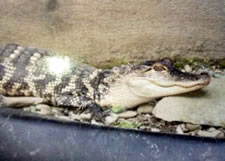 Not the typical lost pet story -- from a State Police press release:
Not the typical lost pet story -- from a State Police press release:
State Police in New Lebanon are asking for the public's assistance in locating a missing alligator named Kobe. Kobe absconded from his cage last night in the Cemetery Road area of New Lebanon. Kobe's owner states he was last seen wearing a blue collar. If you see Kobe, please contact the State Police at (845) 677-7300. For safety reasons, do not approach Kobe.
New Lebanon is in northern Columbia County near the Rensselaer County line.
Apparently Kobe -- that's him in the pic -- is a 3.5-foot alligator from Rhonda's Reptiles, a reptile rescue/party rental ("Reptiles for Parties and Events"). The owner, Rhonda Leavitt, tells the TU she does "not consider [Kobe] to be a dangerous animal," and that he'll probably run away from people. [CBS6] [YNN] [TU]
Noted.
photo via NY State Police
At the fair, competing for a ribbon
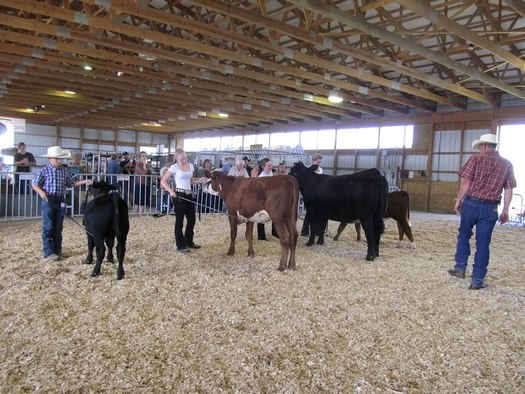
We're right in the middle of county fair season in the Capital Region. For a lot of people, that means rides on the Ferris wheel, games, and food on a stick.
But for some kids the county fair is the culmination of months, even years, of hard work. It's a step toward a future career. It's an opportunity to compete. It's a chance to win a ribbon.
New York State bans possession of shark fins
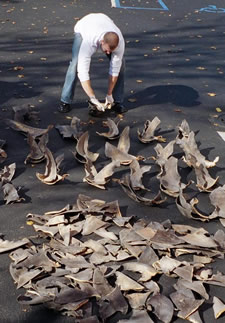 Starting next year it will be illegal to possess, sell, or distribute shark fins in New York State (with a few exceptions). The prohibition is part of a bill signed by Andrew Cuomo today. [Open Senate] [Cuomo admin]
Starting next year it will be illegal to possess, sell, or distribute shark fins in New York State (with a few exceptions). The prohibition is part of a bill signed by Andrew Cuomo today. [Open Senate] [Cuomo admin]
It's estimated 100 million sharks are killed for their fins each year. Shark fins are in high demand for use in shark fin soup, which is a luxury item in some parts of the world. That demand has resulted in many sharks being de-finned and then thrown back in the ocean to slowly die. As you can imagine, that's a cruel way to meet the end. [Ocean Defense] [Wikipedia] [Wikipedia]
The practice -- called "shark finning" -- had already been illegal in New York. With the ban on possession of fins, the Empire State joins a handful of other states. California's ban just took effect this month -- and faced opposition from some groups there who argue it's discriminatory against Chinese Americans. [CBS San Francisco]
An upcoming federal rule change, though, could pre-empt parts of theses state bans, and Congressional reps from states with bans -- including New York -- are trying to head off the rule change. [AP/Yahoo News]
photo: Shark fins confiscated by the federal National Oceanic and Atmospheric Administration, via NOAA via Wikipedia
Frog songs
Not a bird.
Today's moment of nature: a grey tree frog signing at night in the Albany Pine Bush.
Speaking of sounds at the Pine Bush... There's a "World Listening Day" hike planned for this Thursday (July 18) to "explore the sounds of the Pine Bush, [and] discover how sound plays an important role in conservation." The hike is at 5 pm. It's $3 per person / $5 per family. Pre-registration required.
A good cat groomer?
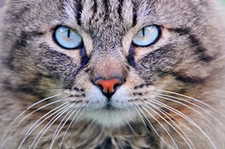 Jennifer emails:
Jennifer emails:
At the risk of sounding like a crazy cat lady, I need help finding a groomer for my cat. Newborn baby + slightly neglected long haired cat = a total mess. We had a not so good experience with the vet recommended groomer. I appreciate the help!
We know there are a bunch of places for dog grooming. But cat grooming seems like it's probably harder to find. And it's our understanding that cats can sometimes be challenging when it comes to stuff like this. (Let's not even talk about trying to herd them.)
So, anyone have a suggestion for Jennifer and her cat? Please share!
Earlier on AOA: Ask AOA: Veterinarian care for cats?
photo: Flickr user Tambako The Jaguar (cc)
A new neighbor, visiting via chimney
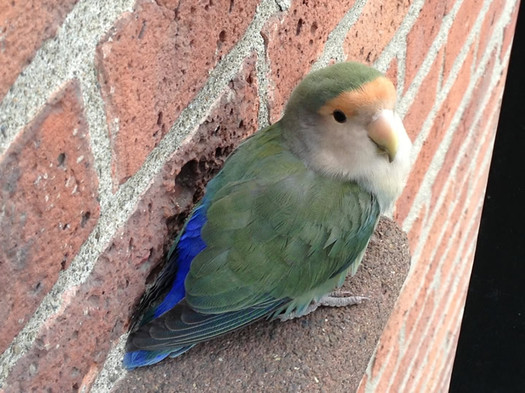
John emails with an unusual story:
Friday morning I found my dog Lucy staring intently into our fireplace. When I investigated what was arousing her interest I saw that this amazing bird [photo above] had gotten into the fireplace by coming down the chimney!
Luckily for me, the fireplace screen had prevented the bird from just flying into my living room. I was able to gently capture it with a large aquarium net and I brought it out to my front porch. After getting the net off, we sat together for about a minute - the bird chirped a few times and seemed very calm. I was starting to worry that the bird was injured and couldn't fly when all of a sudden it took off like a shot for the trees in Hudson-Jay Park. I went back inside, gave Lucy a dog treat and closed the chimney flue.
After a quick Google search, I believe this is probably a juvenile Monk Parrot. I also found that this may not be the first time they have visited Albany.
I'm looking forward to spotting my new neighbors around Center Square this summer.
Monk Parakeets -- AKA Quaker Parrots -- are originally from South America, but there are now feral populations in spots around the world thanks to escaped (or released) birds. Chicago has a long-established population in its Hyde Park neighborhood. And Brooklyn has a a population -- it even has a website tracking the group. (Brooklyn was into Quaker Parrots before you were -- they were obscure, you probably hadn't heard of them.)
In some places the birds are regarded as nuisances because they nest on utility poles and other power system equipment.
(Thanks, John!)
Update: In the comments Chrissy and Drew note the bird looks like a lovebird, a different type of parrot.
Earlier on AOA: New York's (now lost) native parrot
Make yourself useful and find me some ketchup
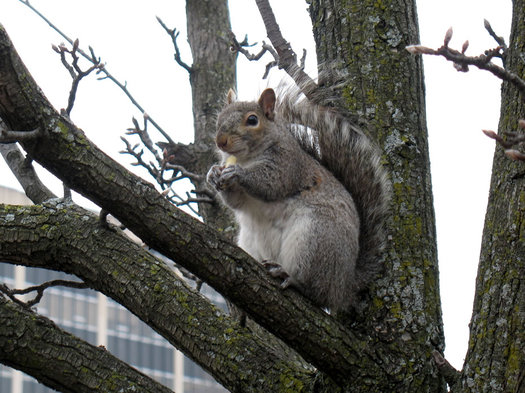
What are you looking at?
Today's moment of whatever: a squirrel eating a french fry on Holland Ave in Albany -- and wondering just what exactly you're looking at. What, you've never seen a squirrel eat a french fry before? Move along.
Leg up
Because it's Friday at 4:30 pm: here are 12 seconds of a baby goat trying to climb up onto a couch at a recent Modern Farmer photo shoot. The kid is from Skipping Goat Farm in Westerlo.
Modern Farmer is a new publication based in Hudson. It's releasing its first issue in April.
Woman bitten by potentially rabid fox in Cohoes
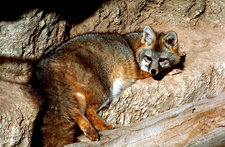 The Albany County Department of Health reported today that a woman in Cohoes was bitten by a potentially rabid grey fox this morning (area map). The fox got away, and officials are urging people to keep an eye out for wild or stray animals that are acting strangely -- and call 911 if one is sighted.
The Albany County Department of Health reported today that a woman in Cohoes was bitten by a potentially rabid grey fox this morning (area map). The fox got away, and officials are urging people to keep an eye out for wild or stray animals that are acting strangely -- and call 911 if one is sighted.
Update: A fox -- maybe the fox -- was shot by Cohoes police later in the day. Update update: The fox that was shot tested positive for rabies, Cohoes police say. [TU] [@CBS6Jennifer]
Rabid foxes turn up now and then in this area. Three foxes tested positive for rabies between January and October of 2012 -- one each in Albany, Rensselaer, and Saratoga counties -- according to the most recent data posted by the state DEC. There were also three positives in 2011 -- two in Saratoga County, and one in Schenectady County. Statewide that year there were 26 positive tests for rabies in foxes, 21 of those in grey foxes.
Back in 2010 a man was bitten by a rabid fox in Greenwich, in a scene that sounds like something from a B movie. From the Daily Gazette:
Richard Leddy, 40, said he was lying on the town beach reading when he heard someone in the water say, "Oh look, there's a fox."
"I thought they meant on the other bank, but then I heard a snarl and looked over to see the fox in mid-leap," Leddy said. "Next think I knew he'd sunk his teeth into my arm."
Yikes.
The animals that most often turn up with positive rabies tests in the state, at least over the last few years, are raccoons and bats. In 2011, there were 162 raccoons that tested positive, and 64 bats. (That's just a raw count of positive tests by the state lab, not a measure of prevalence within the population of those animals compared to other animals.)
In fact, the last two people to die of rabies in New York State -- in 1995 and 1993 -- got it from a bat, according to the state's Wadsworth Center.
Earlier on AOA:
+ "Pet" gray fox on the loose in Troy
+ Fox stalking
photo of a grey fox (*not* the grey fox in Cohoes): US Fish and Wildlife Service via Wikipedia
Good puppy classes?
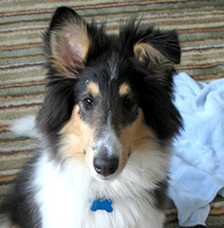 Zach emails:
Zach emails:
I'm desperately looking for a Puppy Kindergarten class. I've been searching the "internets" and found a couple of places, but I was hoping that maybe AOA might be able to assist and ask about good, quality puppy classes? Any help would be greatly appreciated.
Here's the thing about puppies: yep, they're cute and fun, but if you're doing it the right way, they're also a lot of work -- training, socializing, no-don't-eat-that!-ing. But it's worth it. Because all that effort in the beginning pays off as they get older. A trained, well-socialized puppy usually results in a well-mannered, calm adult dog.
So, got a suggestion for Zach and his pup? Please share! And a little bit of explanation/detail about your suggestion is always appreciated.
Earlier on AOA: Ask AOA: A good veterinarian for dogs?
Wild about turkeys
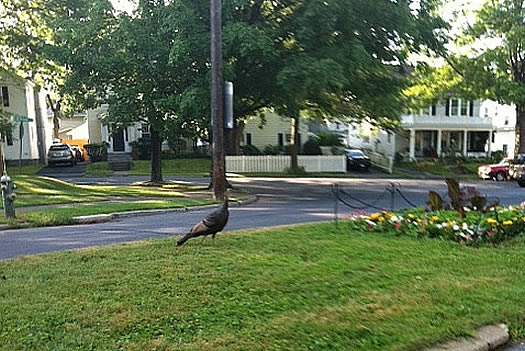
A wild turkey spotted in the Melrose neighborhood in uptown Albany last year. (photo via David M)
The turkey is, of course, a centerpiece of many Thanksgiving meals. But the birds have a long and varied history in this country. Among their admirers was Ben Franklin, who once wrote that he preferred the turkey over the bald eagle as a symbol:
For in Truth the Turkey is in Comparison a much more respectable Bird, and withal a true original Native of America... He is besides, though a little vain & silly, a Bird of Courage, and would not hesitate to attack a Grenadier of the British Guards who should presume to invade his Farm Yard with a red Coat on.
So turkeys go with this country like cranberries go with, uh... turkey.
Even so, we're always a bit surprised -- and it makes us smile -- to see wild turkeys hanging out in residential areas of the Capital Region. As they peck their way through a neighbor's yard, the turkeys are just like, "What are you looking at?"
The Albany Pine Bush Discovery Center has a program coming up about wild turkeys. So we bounced a few questions about the birds to Jacqueline Citriniti, an environmental educator at the center.
It turns out wild turkeys a more interesting than a Butterball.
"Pet" gray fox on the loose in Troy
 Weird: we came across an item on Craigslist this week for a lost "pet" fox in the Troy area. And though the gray fox has "a collar and tags and is up to date on all her shots," according to the listing, there was a warning that it had been trying to "play" with other pets and ended up getting into fights. The fox is apparently not afraid of people.
Weird: we came across an item on Craigslist this week for a lost "pet" fox in the Troy area. And though the gray fox has "a collar and tags and is up to date on all her shots," according to the listing, there was a warning that it had been trying to "play" with other pets and ended up getting into fights. The fox is apparently not afraid of people.
So we contacted the Department of Environmental Conservation to see if they'd heard anything about this. From DEC spokesman Rick Georgeson:
We are aware of this animal which is running loose with a collar and tags in the vicinity of RPI. If the animal is caught it will be taken to a wildlife rehabilitator and the owner will be ticketed, if he can be found. It is illegal to keep wild animals as pets without a permit and DEC has no permits on file for this animal.
People should either call 911 [if fox is sighted] and they will contact us or they can call the DEC dispatch at 1-877-457-5680.
The photo on the right is US Fish and Wildlife Service pic of a gray fox. (It's not the gray fox in Troy.)
A fox is a fox
Foxes may look like dogs -- but no matter how you raise a fox, it will still be a fox -- that is, a wild animal. There's a fascinating NOVA episode about dogs -- called "Dogs Decoded" (it's on Netflix streaming) -- that highlights how far removed modern dogs are from their wild cousins . The episode includes a look at a long running study of fox domestication in Siberia, as well as researchers who have tried raising wolf pups like dogs at home. The short story: foxes and wolves are not dogs -- they don't read humans the same way, and they're aggressive.
photo: US Fish and Wildlife Service via Wikipedia
Peaceful Acres

Ten years ago Nanci Beyerl moved to a plot of 10 acres in Pattersonville with four horses. She was looking to escape her own past, and decided offering sanctuary to abused, neglected and overworked horses could be a way to do that.
The horse sanctuary she created -- Peaceful Acres -- is now a 156 acre farm and provides a home to 54 horses. And Nanci is helping other people find peace through what she calls "equine guided experimental learning."
The dog who fell off a cliff at Thacher Park -- and lived
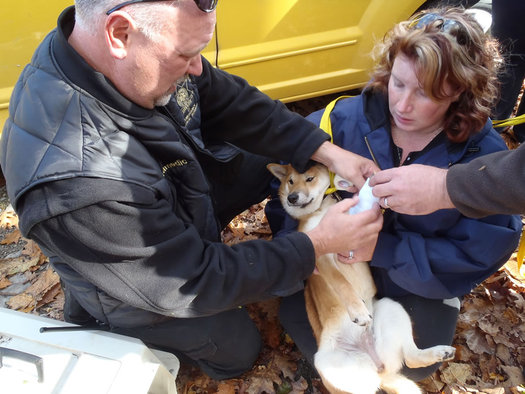
The dog in the photo above -- Shiba, a Shiba Inu puppy -- was rescued Sunday after it fell off a cliff at Thacher Park.
From the Albany County Sheriff's Office press release:
Apparently "Shiba", a six month old Shibainu puppy had run off of a cliff located in the Hales Cave area of Thacher Park. Shiba was being walked in the area by her owner, Samantha Cullum of East Greenbush, when she strayed away from her owner and ran off of the cliff. The Albany County Sheriff's Office Search and Rescue Team responded and repelled down the cliff to locate the canine. After an extensive search, Shiba was found hiding in a three foot deep crevice by members of the Search and Rescue Team. Shiba suffered what appeared to be a broken leg and was treated by Albany County Paramedics on the scene. Shiba was transported by her owner to the Latham Animal Hospital for emergency veterinary care. Albany County Sheriff's Patrol members, Albany County Paramedics, and maintenance staff from Thacher Park also assisted in the search.
Shiba's story about all this is totally going to trump the other dogs' stories about squirrels and tennis balls at the next dog park meetup.
Update: The dog's owner tells the TU she and the dog were far away from the cliffs when the dog took off -- and acknowledges she should have had the dog on a leash.
photo courtesy of Albany County Sheriff's Office
The special goat
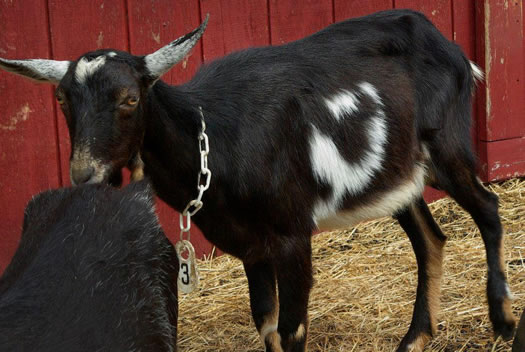
So, about those stories from the farm. We were talking with Regina and Frank from the goat milk dairy Goats and Gourmets last night, and they mention their "special goat." And we're like, oh... special how?
The photo above is of said goat. They say the mark is naturally occurring. And, yep, they call him Mickey.
photo courtesy of Goats and Gourmets
A bid to make Owney famous again
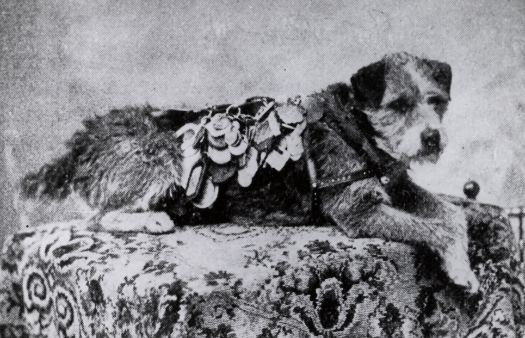
Dog star.
There's a Kickstarter project currently up for funding that would create a graphic novel about Owney, Albany's famous traveling dog. From the St. Louis-based team behind The Secret Around-the-World Adventures of Owney, the Postal Dog:
What if Owney had made some unexpected detours during his travels around the world and had some exciting adventures along the way? He was always going his own way, so it wouldn't be altogether surprising.
We imagined him not just stopping in Japan and China, but crossing into India, the Middle East and Europe on his own before sailing back to the States. He would have had a chance to see a world very few people saw at that time. He might have befriended postal workers of distant countries or met famous contemporaries like the Lumiere Brothers in Paris...
If their project is successful, Albany's most famous pooch could be famous once again.
What? You don't know about Owney?
Shake up for horse racing in New York
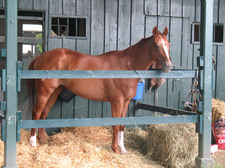 Two important recent developments about horse racing in New York:
Two important recent developments about horse racing in New York:
State takeover of NYRA
The Cuomo admin announced today (Monday) that Andrew Cuomo has signed the legislation that creates the "NYRA Reorganization Board" -- basically the committee that will carry out the three-year state takeover of NYRA, a plan that was announced this past spring. This is important because NYRA is the org that runs the Saratoga Race Course, Belmont, and Aqueduct. From the press release:
"New York State's racing industry is a major economic driver in the state, supporting thousands of jobs and attracting tourists from around the world," Governor Cuomo said. "New York taxpayers and the betting public deserve a racing industry that is managed competently and does not neglect the health and safety of the horses. The NYRA Reorganization Board will restore public trust, accountability, and transparency to the racing industry in our state, so New York can continue to offer one of the most exciting, enjoyable, safe horse racing experiences in the nation."
The reorganization board will have 17 members -- Cuomo gets to pick seven of them, the Senate and Assembly two each, and the current NYRA board five, with a chairperson nominated by Cuomo.
NYRA has been a scandal-plagued trainwreck for years, so it will be interesting to see if the state takeover smooths things out.
Horse safety
On Friday the Cuomo admin announced a series of reforms aimed at promoting the safety of horses racing on tracks in New York.
Jojo's strange trip
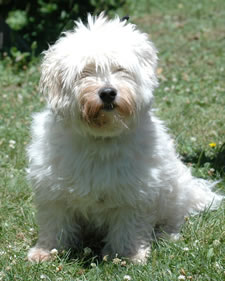 The Mohawk Hudson Humane Society says a staff member found this dog -- named JoJo -- tied to a pole in the org's parking lot in Menands. Luckily, JoJo had been chipped -- and it turned out he belonged to a family from... Michigan.
The Mohawk Hudson Humane Society says a staff member found this dog -- named JoJo -- tied to a pole in the org's parking lot in Menands. Luckily, JoJo had been chipped -- and it turned out he belonged to a family from... Michigan.
From a MHHS press release (link added):
Jojo's original family had to move from a house into an apartment that did not allow pets. They gave him to what they thought was a good home. From there Jojo bounced around a bit and no one knows how he came to New York State and the Mohawk Hudson Humane Society in Menands. ...
"Jojo is a perfect example of the importance of the microchip. If he were not chipped, this story might not have the same happy ending that it does," said Executive Director Brad Shear. "We have a virtual lost and found board on our website where people can post a listing for lost pets and people finding pets can post found reports, and all strays are posted on the website. But hundreds of animals come to the shelter with no ID.
JoJo's owners drove from Michigan this past weekend to pick him up. We'd love to know how he got here. Maybe he pulled an Owney. [Fox23]
The humane society will be chipping dogs and cats today (Monday) and Tuesday for $15 from 10 am-5 pm at the shelter in Menands. (The chip is a tiny capsule implanted under the animal's skin. The info on can be read when a scanner passes over it.) Dogs must be leashed and cats must be in a carrier.
photo: Mohawk Hudson Humane Society
Now emerging: Karner Blues

Beautiful and rare.
The Albany Pine Bush Preserve Commission announced today that it has 600 Karner Blue butterflies emerging from their cocoons right now. From the press release:
Adult female Karners are captured from New York sites and immediately transported to the rearing facility in Concord, NH. Eggs produced by these butterflies are raised to chrysalises and returned to the Albany Pine Bush Preserve. The adults that emerge are released into restored habitat to begin new colonies. ...
"This is a very exciting, and very limited chance to see this Federally endangered butterfly," says Discovery Center Director Jeffrey Folmer. "One question visitors often ask is 'Where can I see the Karner blues?' These beautiful, but tiny butterflies are rare, hard to spot, live only three to five days and are difficult to distinguish from other similar non-endangered butterflies. We now have 600 of them emerging from their chrysalises one by one and they're on view until they all emerge."
The commission says butterflies will available for viewing at the Albany Pine Bush Discovery Center until mid-July. Admission is free.
The Albany Pine Bush -- a sandy inland pine barren -- is one of the Karner Blue's native habitats (there aren't many remaining). In fact, the butterflies are called "Karner Blues" because of the no-longer hamlet of Karner, New York. Vladimir Nabokov -- yep, the author -- stopped to study the butterflies there in 1950 and ended up naming them. Nabokov once described the insects as being "like blue snowflakes."
Earlier on AOA:
+ The Karner Blue
+ Why the Albany Pine Bush is sandy
+ On state animals, vegetables and whatnot
photo: courtesy of the Albany Pine Bush Preserve Commission
The North Greenbush bear lands, softly
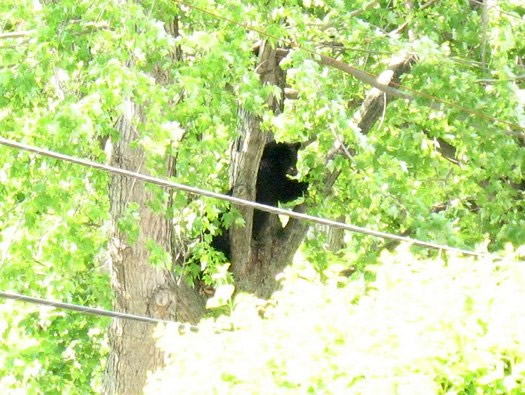
All this attention? For me?
After spending most of Wednesday hanging out in a tree, the North Greenbush bear finally came down shortly after 4 pm. It wasn't by choice -- he had been hit with a tranquilizer dart -- but it was a soft landing, apparently.
"This guy went down pretty good," said NYS DEC police lieutenant Jim Hays shortly after the landing. Hays said the bear appeared to hit the ground softly while zonked on tranquilizers. "They're like a big bowl of jello when they land."
The black bear had climbed a a large tree in the front yard of a house on Meadow Dr, just across Williams Road from the North Greenbush Town Park. DEC had originally planned to let the bear come down on his own. But after he seemed content to sit in the tree for hours, DEC decided it was time to move things along.
Hays said they were worried about the situation becoming a public safety issue. Williams Road was filling with rush hour traffic. A large crowd of media and onlookers had gathered just on the other side of road. And Hays said people had started to circle around the scene for a better look, cutting off potential escape routes for the bear.
This most recent bear is the third one captured in the the core Capital Region in the last couple of weeks -- the other two were in Albany and Schenectady. There was also a bear
"We need to learn how to live with them," Hays said, describing Albany and Rensselaer counties as bear country. "They're not going to go away."
As with the other recently captured bears, DEC will keep the North Greenbush bear overnight for observation. If he checks out OK, Hays says they'll take him some place more bear appropriate and release him.
There are a bunch of photos from today's scene after the jump.
New York's (now lost) native parrot

From an 1825 illustration by John James Audubon.
As strange as it might sound, there were once parrots -- parakeets, specifically -- that were native to New York State. The range of the Carolina Parakeet stretched as far north as the Great Lakes, and there are historical reports of them in Albany.
They were brightly colored. They were loud. And by the late 1800s, they were gone from here. After the early 1900s, they were extinct.
Bear captured in south Albany
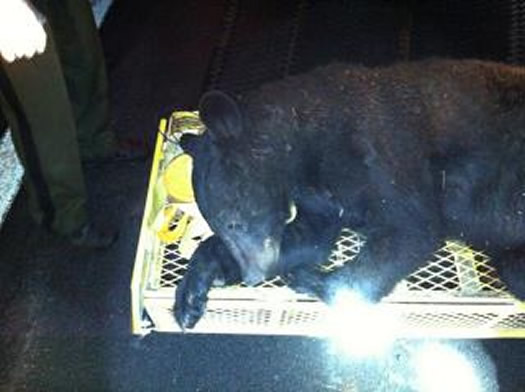
This guy had a tough night -- he was tranquilized and fell out of a tree.
Updated Wednesday 4 pm
Albany police say they got a call about a bear in Albany's south end last night. From the press release:
Police were called to the 200 block of Mount Hope Drive, after a resident called stating a black bear was seen eating out of a bird feeder. Police arrived and observed a 175 pound black bear wandering through the yards. Police followed the bear and set up a perimeter in the rear of 156 Mount Hope Drive after the bear had climbed a tree.
The New York State Environmental Conservation Police responded and was able to get the bear out of the tree safely using a specialized tranquilizer. The bear was taken to the Environmental Conservation Building in Schenectady where it was evaluated by their medical staff. The bear is currently healthy and is expected to be released into the wild sometime later this afternoon.
Mount Hope Drive is near the end of 787, not too far from the Bethlehem line (map).
An update from state Department of Environmental Conservation's Rick Georgeson:
A 175-pound, two-year-old male bear was tranquilized in the city of Albany by DEC Environmental Conservation Officers last night around 9 p.m. The bear fell approximately 50 feet out of a tree in the vicinity of South Pearl St. and Interstate 787.
The bear is being evaluated at the Stamford DEC office to determine if it sustained any injuries from its fall. If the bear is healthy, it will be released in the Catskills. If it sustained serious injuries, it will have to be euthanized.
We do not know where the bear came from.
Update: Georgeson says the bear appears to be in good condition and will be released in the Catskill Forest Preserve on Thursday.
That's a photo of the bear above, via the DEC.
Tedisco: animal abusers should be required to get a psychiatric evaluation
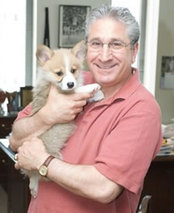 Following the latest gruesome turn in that large cat hoarding case spanning Saratoga and Rensselaer counties, Jim Tedisco is pushing legislation that would:
Following the latest gruesome turn in that large cat hoarding case spanning Saratoga and Rensselaer counties, Jim Tedisco is pushing legislation that would:
+ Require convicted animal abusers "undergo a psychiatric evaluation and treatment as warranted"
+ Place the names of people convicted under Buster's Law on a statewide registry
+ Prohibit anyone convicted under Buster's Law from owning a companion animal (ie, a pet), unless a psychiatric evaluation concludes "clearly and convincingly that such person is of sound mind and possess the capacity and ability to properly care for such animal"
Said Tedisco in a press release:
"Pet owners have a responsibility to raise animals in a safe, sanitary and humane environment and only take in animals they can reasonably care for. Animal hoarding is a sickness and anyone who would engage in this disturbing behavior may have a mental illness and needs to be treated before they harm more animals or hurt people. Animal hoarding also impacts neighborhoods by causing dirty and unsanitary conditions where disease and infestations can spread."
The proposed legislation sounds reasonable. There are always the details, though: who pays for the psych evaluations, would rescue orgs be required to check the registry before adopting out animals, and the prohibition against abusers owning pets would probably be difficult to enforce. But in this most recent cat hoarding case -- and many other cases -- it does sound like the people really do need some sort of psychiatric help.
Tedisco pushed for the passage of Buster's Law -- which makes aggravated cruelty to animals a felony -- in 1999. He also has a corgi named Gracie (see photo -- Gracie's the one on the left).
photo: Jim Tedisco Facebook
New York State's 2011 bear "harvest"
 The state Department of Environmental Conservation reports there were 1258 bears killed by hunters in New York in 2011. That's up about 18 percent from 2010 -- and higher than the five-year average (1,152) -- but short of the record on the books (1864 bears in 2003).
The state Department of Environmental Conservation reports there were 1258 bears killed by hunters in New York in 2011. That's up about 18 percent from 2010 -- and higher than the five-year average (1,152) -- but short of the record on the books (1864 bears in 2003).
Last year's total did include a record number for the sub area that covers part of the Capital Region. The DEC attributes the record to bear hunting being opened in counties stretching from Rockland and Westchester counties north to Washington County. The cover of the DEC report includes a photo of a hunter with a bear killed in Columbia County, which the agency says might have been the first bear taken in the county since the 1800s.
Capital Region
There were 26 bears killed in the Capital Region's core counties last year: Albany (4), Rensselaer (11), Saratoga (11).
Counties in the greater Capital Region: Columbia (10), Greene (68), Schoharie (19), Washington (20), Warren (27).
In recent years DEC has said that bear populations in the state are "thriving."
By the way: the word used by the DEC to describe a year's take of bears (and deer) is "harvest" -- which makes sense. But it always makes us think of a field of bears growing in rows. And we suspect the bears have a different word for it.
Earlier on AOA: Don't feed the bears
photo: Flickr user peupleloup
White Nose Syndrome continues to kill off bats

Bats with White Nose Syndrome in Hailes Cave in Albany County.
White Nose Syndrome -- the bat disease first identified in the Capital Region -- has killed as many as 6.7 million bats, according to recent estimates by biologists working with the US Fish and Wildlife Service. Since first being documented in 2006, the disease has now spread to 16 states -- and at many sites it's killed almost 100 percent of the bats. It has some biologists worried that some once-common varieties of bats could be facing extinction. [US FWS] [NYT]
The "white nose" in the syndrome's name refers to a fungus that grows on the face of the bats. Last fall researchers confirmed the fungus was responsible for the syndrome after 100 percent of the bats exposed to it in captivity developed the symptoms in a study. The fungus infects the bats' skin and causes lesions. [Nature News]
In 2010, New York State's Department of Environmental Conservation reported the White Nose Syndrome was likely in all bat caves in the state. The population of some species of bat had declined by 90 percent. [NYS DEC]
The disease was first identified in Howes Cave in Schoharie County -- it spread to other caves in the region and large bat die-offs followed.
Bats don't necessarily have the best reputation with a lot of humans, but they're an important part of the ecosystem because they eat huge numbers of insects -- including mosquitos.
photo: Nancy Heaslip, NYS DEC
Severed dog head found along Route 85
Weird/disturbing story of the day: Albany police say a severed dog head found along Route 85 near the Harriman State Office Campus Monday morning. From the press release:
The Animal Control Officer located a pit bull's head that had been severed. It was on the roadway just before the Washington Avenue overpass. A search of the immediate area initially did not locate the body of the dog. ...
It initially could not be determined whether it's had been intentionally severed or if it was struck by a car.
A search was conducted late this morning and the dog's body was found in between the eastbound and westbound lanes in between the cement supports of the Washington Avenue overpass.
The owner of the dog, who lives in Albany, was located today and she told police the dog was acting strange this past Friday and it got loose from her and took off. She had put out flyers and posters for her dog and called the Mohawk Hudson Humane Society to report her dog missing.
APD spokesman Jimmy Miller told the TU today that the DEC pathologist who examined the dog called the case "very unusual."
Full press release after the jump.
A fisher strikes a pose
Today's wildlife moment: a posing fisher.
During our email exchange earlier this week with scientist Roland Kays, he passed along two recent clips his wildlife cameras had captured in the Colonie. The first, embedded above, is of a fisher striking a pose in front of a camera just off Sand Creek Road (we're guessing this is the general area):
This camera was ... in a slim strip of forest that connects 2 larger wooded areas (aka core areas). Our GPS tracking of fishers suggested that they used this strip as a movement corridor to get between the larger fragments, we are now testing that by setting cameras out.
We've linked to it before, but here's Kays' "Scientist at Work" series at NYT about tracking fishers in Latham.
The second clip, of raccoons "jogging" over a footbridge near the Hilton Garden Inn at ALB, is after the jump.
Behold, the white squirrels at play

Not common, but easy to spot.
Today's Moment of Nature* comes via Amy Riddell at Emack and Bolio's, who noticed a pair of white squirrels playing (or whatever it is squirrels do) in the ice cream shop's yard.
Amy says the white squirrel has lived in the Delaware Ave neighborhood for a few years, and people have spotted two babies (one of them is in the photo with the mother). After much chasing, Bennett also spotted what could be the same white squirrel last year. (There have been white squirrel sightings in Troy, too.) [Photo This] [RPInsider]
A lot of people refer to white squirrels as albino, but most of the squirrels probably don't have that condition. They're actually just genetic color variants of regular gray squirrels, in which the genes for the white belly are active in other parts of the animal's coat (albinism is a different situation). Look for the eyes -- if they're not red/pink/blue, it's probably not an albino squirrel (and too bad -- because albino squirrels have their own preservation society). Some have argued the all-white fur could even be an adaptation to urban environments (we're skeptical -- but maybe it makes them easier to spot when they cross the street). [NYT] [Wikipedia] [Science Buzz] [The Wild Classroom]
Places with unusually large populations of white squirrels have taken the animals as claims to fame -- with fights over which place is actually the white squirrel capital of the country. Some of the claims include origin myths. There was even a white squirrel-related request for federal pork this year (in Tennessee). And, of course, the obligatory tribute video to the white squirrels from a town in North Carolina. [Roadside America] [NC Farm Bureau] [ABC News]
One more Delaware Ave white squirrel pic from Amy is after the jump.
* It's like that segment at the end of CBS Sunday Morning in which video of cranes standing in a wetland runs for a minute or two without voice over.
(Thanks, Amy!)
A good veterinarian for dogs?
 Brian asks via Twitter:
Brian asks via Twitter:
Help! I need a vet in Albany / Troy area! My pup needs to see the doctor. Please recommend a good veterinarian.
This question has come up before for cats, but not dogs -- which is a little surprising given how many people seem to have dogs.
Got a suggestion? Please share! And please include why you like going to that vet.
Begun again the War on Crows has
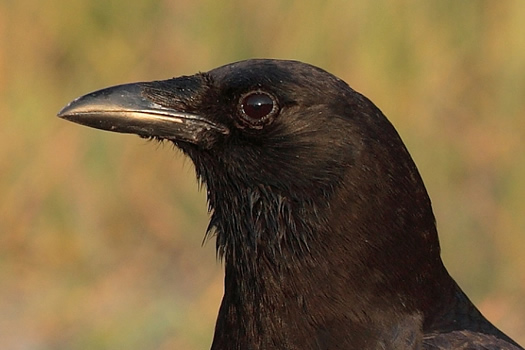
And the beady eyes that stare right through your soul.
The city of Albany has announced that once again it will be engaging in the War on Crows. This winter's campaign will include the following tactics (emphasis added):
The non-lethal harassment methods used to disperse crows will include pyrotechnics, electronic guards, non-harmful lasers, and amplified, recorded crow distress calls. Several of these methods produce loud noises and flashing lights, (similar to sirens and fireworks) that frighten birds and may be heard or observed by local residents. Biologists will be wearing uniforms and a blaze orange vest marked "USDA Wildlife Services."
The first offensive will begin in the Center Square and Sheridan Hollow neighborhoods next Tuesday late afternoon and continue through Thursday. Full details in the press release after the jump.
Albany and other Capital Region municipalities and institutions have been taking up arms against roosting crows for the past several winters -- and yet victory remains elusive.
The crow is a formidable adversary. Researchers say the birds can use tools, recognize humans and hold grudges (even if you can't figure out what you did to them). They are highly intelligent animals (perhaps aided by secret government programs -- the TRUTH IS OUT THERE.) Earlier this year the mayor of Amsterdam revealed the crows had cracked the city's waste disposal codes. It's only a matter of time before they learn how to use Twitter and Facebook.
Thankfully, the humans have had a major weapon of their own in the form of Green Island mayor Ellen McNulty-Ryan and her trusty pyrotechnic sidearm. But there's only one EMR -- and the crow hordes are vast.
Earlier on AOA: A dossier on our crow invaders
photo: Wikimedia Commons user mdf
Don't anger the butterfly
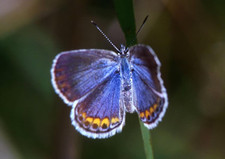 From a recent op/ed by the Karner Blue Butterfly in The Onion:
From a recent op/ed by the Karner Blue Butterfly in The Onion:
I think people always expected that when the time came for us to go extinct, we'd go down all quietlike--that just because we're small blue butterflies with a wingspan of an inch, we wouldn't put up a fight. Well, I can assure you that before my kind dies out there will be a reckoning. Blood will run in the streets. Human blood.
I swear to you on all that is good and holy that before the Karner blue goes extinct, myself and the last remaining members of my species will take out as much of the human race as we possibly can. There will be mayhem. Children will die. People will suffer.
You can take that to the bank.
So... tread lightly in the Pine Bush. There's nothing more dangerous than a butterfly with nothing left to lose.
(Thanks, Mathew!)
Earlier on AOA: The Karner Blue and its local history
photo: Hollingsworth, J & K/US FWS via Wikipedia
There's a turkey in the neighborhood

Where was this turkey going? Morning walk? Getting coffee? Walk of shame?
David emailed this pic this morning:
Was driving into work this morning traveling through the Melrose area in Albany and noticed that this turkey was casually grazing right in the middle of Belvidere Ave.! Had to stop and take a picture as I wasn't sure anyone would believe me. Well there it is!
Melrose is the neighborhood uptown, between Western and Washington, just to the east of the state office campus. While it's not super dense, it's full of closely-spaced single and multi-unit houses. We've seen turkeys at Capital Hills, the municipal golf course on the edge of Albany -- but never right in the middle of a neighborhood like this.
Until now. Gobble.
(Thanks, David!)
Duckling cuddle puddle
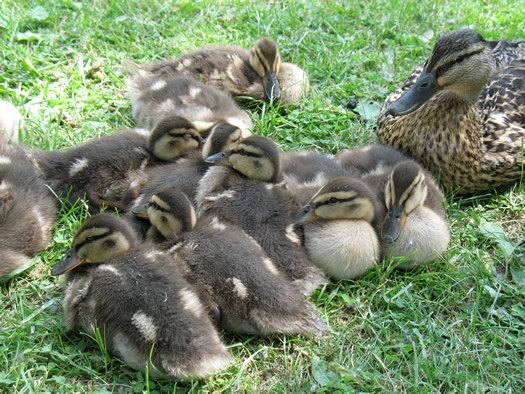
Nap time.
For no other reason than... CUDDLING DUCKLINGS!
It was a warm afternoon at Buckingham Pond in Albany, and the ducklings were very sleepy.
Are there more photos? Do you have to ask?
Albany chicken veto override vote
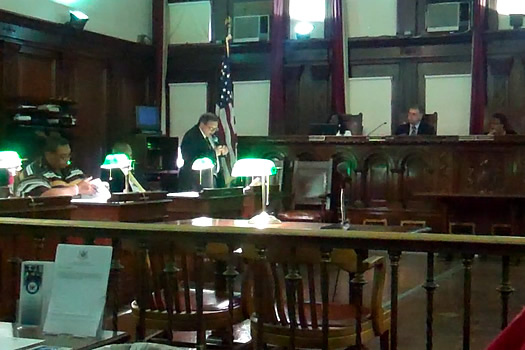
Councilman Dominick Calsolaro speaking ahead of the override vote.
The push to allow backyard chickens in Albany came to an end Monday as an override attempt of the Jerry Jennings' veto failed to get enough votes in the Common Council .
Mike Guidice, who along with his wife Jen Pursley has been leading the chicken coalition, was disappointed -- and talking about what's next.
The Karner Blue
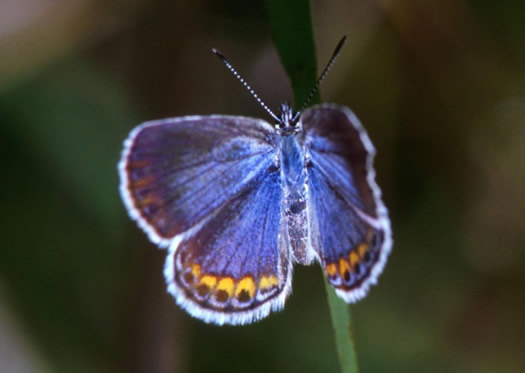
Nabokov once described the a group of Karner Blues appearing like "blue snowflakes".
The first flight of Karner Blue butterflies should be appearing in their habitats around the Capital Region right about now.
The beautiful endangered butterflies hang around sandy pine barren habitats. Two such spots in the Capital Region: the Albany Pine Bush Preserve and the Wilton Wildlife Preserve. Drew was at the Wilton preserve this past week and said the butterflies were easy to spot.
Karner Blues congregate in these habitats because they're also the habitat for blue lupine. The butterflies lay their eggs on the plants.
There's some great history Capital Region history involving the Karner Blue. The common name of the butterflies is linked to a spot here -- and Vladimir Nabokov classified the butterflies. Yep, the author.
Any way the wind blows
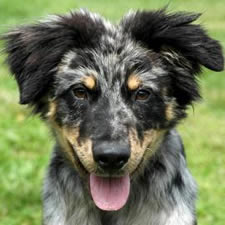 Life can throw things at you that are unexpected and terrifying -- and yet, sometimes, it can still work out. Even if you're a dog.
Life can throw things at you that are unexpected and terrifying -- and yet, sometimes, it can still work out. Even if you're a dog.
Back in April, Blue -- a five-month-old puppy, that's him on the right -- was pulled from the rubble left behind by a tornado that swept through northern Georgia. His owners couldn't be found after a month-long search. So Blue was scheduled to be euthanized. That's when a rescue group picked him up from the shelter there.
Blue -- and 19 other "storm dogs" from Georgia -- are now at the Mohawk & Hudson River Humane Society in Menands. They're looking for someone to adopt them.
Jennings to veto Albany chicken ordinance
 Updated at 6:30 pm
Updated at 6:30 pm
Jerry Jennings announced today that he's vetoing the Albany backyard chicken ordinance.
The ordinance passed the Common Council by an 8-7 vote. It would take 10 votes to override the veto.
The mayor's office released a statement this afternoon explaining the veto. That -- and reaction -- is after the jump.
Albany backyard chicken ordinance passes
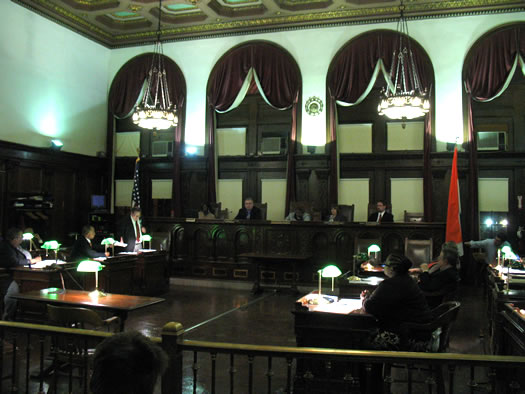
Someone was playing the chicken dance music in the chamber before Monday's meeting.
It's been six months since Jen Pursley and Mike Guidice had to give up their backyard chickens after someone complained to the city. And now they're on the verge of getting them back. Legally.
Monday night the Albany Common Council passed an ordinance that makes it legal to keep backyard hens in the city. But it was close.
Sheep eat the baaaaad
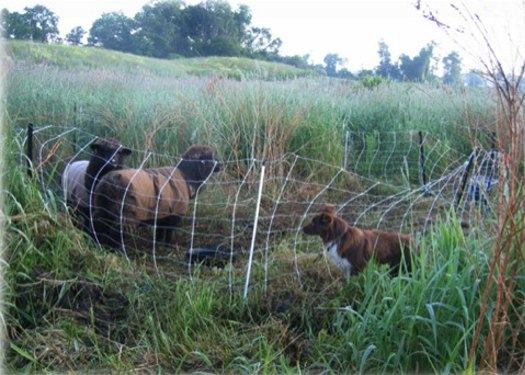
Sheep -- and dogs -- will be working to clear invasive plants from the Normanskill Farm.
There's a new (old) way to combat invasive plant species in upstate New York: small flocks of sheep.
Gary Kleppel, a professor of biological sciences at UAlbany and director of the Biodiversity Conservation and Policy Program there, is in the process of setting up a "targeted grazing" project using sheep at Albany's city-owned Normanskill Farm.
His sheep start arriving in a few weeks and then, with the help of students, dogs, and a fancy fence, the sheep get to work -- eating and gnawing at the plants that cause problems for our ecosystem.
Watch for turtles
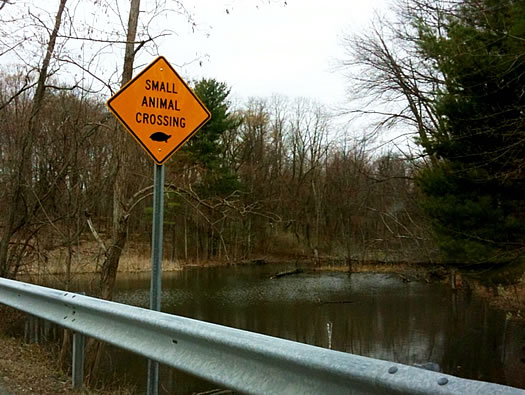
We came across this sign while driving around Bethlehem the other day. It made us smile.
A picture flashed in our mind of a line of cars waiting for a turtle to cross the road.
Pecking at the Albany backyard chicken issue

Michael Guidice making his case for backyard chickens in Albany.
The proposal to allow backyard chickens in Albany is moving on to a vote before the full Common Council.
The council's law, buildings and code enforcement committee voted 3-1 Thursday night to pass along the ordinance to the full council without a recommendation. "[The result] was better than we expected," said Michael Guidice, who's been leading the backyard chicken effort with his wife Jen Pursley (remember, it was their backyard coop that got this issue buzzing).
The vote came after some spirited clucking back and forth on the issue.
Bears -- guilty until proven... dead?
 The state Department of Environmental Conservation has set up a bear trap near the northern Greene County home of the woman who was knocked down by a bear Wednesday. A DEC spokesman tells the TU that the agency will kill the first large adult bear it catches in the trap -- even though they can't be sure they'll get the bear that attacked the woman. [AP/Fox23] [Daily Mail] [TU]
The state Department of Environmental Conservation has set up a bear trap near the northern Greene County home of the woman who was knocked down by a bear Wednesday. A DEC spokesman tells the TU that the agency will kill the first large adult bear it catches in the trap -- even though they can't be sure they'll get the bear that attacked the woman. [AP/Fox23] [Daily Mail] [TU]
So, bears apparently do not enjoy due process. And the policy seems so blunt (and, you know, kind of vengeful) that we almost wonder if something got mixed up in its communication. Because what if DEC catches a bear, kills it, and then another bear (perhaps the bear) comes back and harasses someone again. Does DEC set another trap, and kill another bear (and so on and so on) until the bear encounters stop?
And get this: a 2002 survey conducted for DEC of New York State residents north of NYC reported that more than half of respondents disagreed that bears who repeatedly caused problems for people should be killed -- and the survey even noted that "identifying specific problem bears can be difficult." About 65 percent of respondents said they supported relocating problem bears after negative conditioning. (Here's more info from the DEC about black bear management.)
Bears that become habituated to humans are a serious problem. And it's a problem that humans often help cause (that's not to say that's what happened in this most recent case). As Roland Kays, the State Museum's curator of mammals, explained to us a few years back:
So please don't feed the animals. You're causing problems for all your neighbors. And by trying to help the animal, you could end up getting it killed. What happens is that a bear becomes a nuisance and it gets shot. And the person whose fault that was was the person who started feeding it.
It's illegal to feed bears in New York State -- even indirectly, if you've been given notice.
The DEC reported last month that black bear populations are "thriving" in the state and "represent a great resource for all New Yorkers."
Update: The woman was attacked told Fox23 that she thinks the bear should not be killed.
Earlier on AOA: Foxes and fishers and bears, oh my!
photo: Flickr user peupleloup
Bears. In the bag.
 The DEC reports that 1,064 bears were "harvested" in New York State last year. That's down about 400 from 2009 (the second-highest total year on record), but it's just about the average number during the past 10 years.
The DEC reports that 1,064 bears were "harvested" in New York State last year. That's down about 400 from 2009 (the second-highest total year on record), but it's just about the average number during the past 10 years.
There were eight reported bear kills in the core Capital Region last year. Five in Saratoga County -- four in Hadley, one in Edinburg. And the other three were in Albany County -- one each in Berne, Rensselaerville and Westerlo. There were 21 in the Capital Region in 2009, and 17 in 2008.
A little farther out in 2010: Greene County (49), Schoharie (14), Warren (34), Washington (1).
The DEC says black bears are "thriving" in the state and "represent a great resource for all New Yorkers." No word on how the bears feel about that, but sources within the ursa administration report they'd feel a lot better about it if they were also allowed to have guns.
Oh, deer: The DEC also reported today that more than 230,000 deer were killed by hunters in the state last year.
Earlier on AOA: Don't feed the bears
photo: Flickr user peupleloup
The Earl of Pearl

It all started at State and Pearl...
We're pulling out the AOA soap box each Sunday for people to praise, complain, suggest, joke, or make an observation about things they see going on in the Capital Region.
 It's been a long, hard winter, but now that spring is getting a grip on the ice and snow, things are finally looking up. Some people are waiting for the crocuses to peep their heads out, others for the red winged blackbirds to hit town.
It's been a long, hard winter, but now that spring is getting a grip on the ice and snow, things are finally looking up. Some people are waiting for the crocuses to peep their heads out, others for the red winged blackbirds to hit town.
Me? I'm looking for a squirrel, known downtown as the Earl of Pearl.
Fox stalking
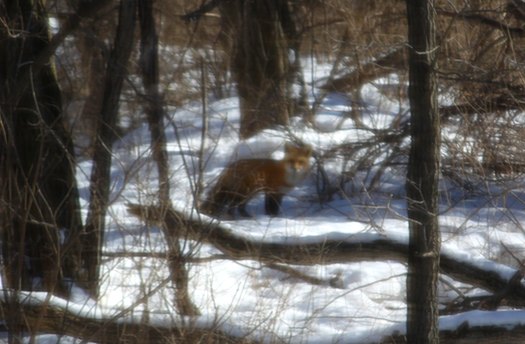
One of these days I'll get a good photo.
I've become a bit obsessed with staring at my backyard.
It all started when I noticed paw prints in the snow a few months ago. They were about the size of a dog's, but in an area of the yard where Henry, our 50-pound-mutt doesn't go.
Then a few weeks later I saw movement on the top of a brush-laiden hill near the house. I couldn't quite figure out what was moving until I caught a glimpse of its burnt orange fur.
It was a pair of red fox.
Since then I do my work near the window, plan my schedule so I'm home around noon (when the two fox are usually out) and keep my camera by me at all times.
I keep looking out the window wondering if they'll frolic with my dog, a la The Fox and The Hound.
As it turns out, they're no fisher but they're pretty fantastic, those fox. And while they probably won't play with my dog -- they're not likely to hurt him either.
Here are a few quick fox facts...
They dare anger the crows
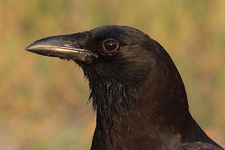 From an Albany College of Pharmacy email that made its way to us this week:
From an Albany College of Pharmacy email that made its way to us this week:
The College is working with the US Department of Agriculture to address the volume of crows on campus and some of the issues that go along with their presence. Over the next week to ten days the USDA will be on campus, typically in the evening hours, and they will use techniques that include fireworks and "starter pistols."
We apologize for any disruptions and also want to inform you of this so that you are not startled or threatened by the noises.
Communities all over the Capital Region have joined the War on Crows each winter for the last few years. Among the tactics: the aforementioned fireworks and pistols, recorded crow distress calls and... lasers. And yet victory has remained elusive.
The crow is a formidable adversary. Researchers say the birds can use tools, recognize humans and hold grudges (even if you can't figure out what you did to them). The mayor of Amsterdam recently revealed the crows had cracked the city's waste disposal codes. It's only a matter of time before they learn how to use Twitter and Facebook.
The one ray of hope in this conflict: Ellen McNulty-Ryan, the mayor of Green Island, who told the Troy Record last year that her city hasn't had a roost in eight years, thanks to her skill with a pyrotechnic pistol. She may be the last bulwark against the inevitable crow uprising.
Earlier on AOA: A dossier on our crow invaders
photo: Wikimedia Commons user mdf
About our urban weasels...
 Today on NYT's "Scientist at Work" blog: NYS Museum curator of mammals Roland Kays, talking about his research on fishers -- Albany's "urban weasels" -- in the Pine Bush:
Today on NYT's "Scientist at Work" blog: NYS Museum curator of mammals Roland Kays, talking about his research on fishers -- Albany's "urban weasels" -- in the Pine Bush:
You can't exactly go out to your backyard and watch fisher behavior. They do their best to avoid people, coming out at night and moving quickly and quietly through the forest. Furthermore, your presence would change their behavior, and also alert the prey they are trying to sneak up on. Over the next few weeks Scott and I will be opening the biologist's toolbox wide to peer into their lives without affecting their behavior. We are deploying small GPS tracking collars to see exactly where the animals go, and tiny three-axis accelerometers to characterize their behavior. We use motion-sensitive camera traps to document their prey populations and monitor key movement corridors. Finally, we follow their tracks in the snow to see for ourselves what they did the night before, what and how they hunt, where they sleep, and with whom. The fieldwork is challenging, but gives us a well-rounded view on how this weasel has adapted to urban forests.
Kays has been pursuing this research for a few years now. We talked with him about fishers two years ago -- it's still one of our favorite AOA interviews.
photo: Roland Kays
Don't feed the bears
 Once just a bad idea, feeding bears in New York State is now against the law. From the DEC:
Once just a bad idea, feeding bears in New York State is now against the law. From the DEC:
Specifically, the regulation bans intentional feeding of black bears, and, after previous written notice from DEC, also prohibits incidental or indirect feeding of black bears through food attractants such as garbage, refuse or bird seed. The regulation grants DEC the authority to require removal of these and other food attractants when bears become problematic.
The DEC reported last year that bear populations in the state are growing. And every year a few wander into parts of the Capital Region where you wouldn't necessarily expect them (hello, Troy and Delmar).
Feeding the bears -- or any wild animal -- sets up everyone up for problems. As Roland Kays, the curator of mammals at the State Museum, told us a few years back:
The other thing that can drive populations really high is feeding the animals. It's really important that people appreciate the animals and the rare glimpses they get, but not feed them because that causes numerous problems. You know, if you have a coyote that's used to coming into a backyard looking for food, then maybe it goes into your neighbor's backyard and they have a one-year-old kid or a dog or cat and you potentially have a problem. That hasn't been a big problem here, but it has in other regions with coyotes.
So please don't feed the animals. You're causing problems for all your neighbors. And by trying to help the animal, you could end up getting it killed. What happens is that a bear becomes a nuisance and it gets shot. And the person whose fault that was was the person who started feeding it.
And keep an eye on those picnic baskets -- we understand the smarter-than-average bears have a keen interest in them.
photo: Flickr user peupleloup
It's winter. Your dog has pooped. What now?
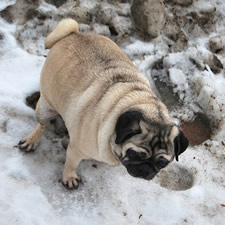 Now that the winter weather has gotten cranked up, we figured it would be a good time to address an issue that seems plop down around the end of each year: dog poop.
Now that the winter weather has gotten cranked up, we figured it would be a good time to address an issue that seems plop down around the end of each year: dog poop.
Uh, why are you bringing up dog poop? Good question! As the cold weather sets in each winter and the snow accumulates, we notice that piles of dog poop start gathering along streets in the Capital Region. (It's kind of hard to miss, given that it's a high-contrast item in the snow.) And these forlorn turds then freeze into unfortunate poopsicles -- which are a real treat come spring.
Well, we've thought a lot about this issue. And we finally came to the conclusion that winter somehow impairs the ability of some people to make good decisions about whether they should pick up their dog's poop.
So, we're here to help. We've constructed a flow chart to assist citizens of the Capital Region in their decision-making process on the all important question: "It's winter. My dog has pooped. What now?"
The proposed Albany chicken amendment
 Following up on the Albany chickens story, here are the main points from the amendment drafted by common councilman Dominick Calsolaro to allow hens in the city...
Following up on the Albany chickens story, here are the main points from the amendment drafted by common councilman Dominick Calsolaro to allow hens in the city...
+ The amendment would only allow hens -- no roosters, and no other farm animals.
+ People wishing to keep hens would have to get a permit from the city clerk.
+ There will be a fee associated with the permit (equal to the fee paid for a dog license).
+ The application for a permit would have to be accompanied by:
"adequate evidence that the applicant has notified all of the property owners and residents within 50 feet of the property lines of the property on which the hens are to be kept and in the case of multifamily dwellings, the express written consent of the owner of the building and all tenants residing in the building other than the applicant"
+ The application would grant the city's codes office the right to inspect the property "at any reasonable time."
+ Inspections will look to see that the hens have a pen, that it's in good repair, clean, and "free of vermin, obnoxious smells and substances." Other criteria include a lack of noise, and suitable conditions for the health of the hens. The pen would also have to be 15 feet from any building capable of housing people.
+ If an inspection finds people aren't following the rules, the permit can be revoked.
The full proposed amendment is embedded after the jump.
Jen Pursley and Michael Guidice -- the couple whose backyard hens set off this discussion -- have organized a coalition to push for a change in the city's laws (they passed along the proposed amendment to AOA). The group appeared at last night's common council meeting. The amendment still has to go to the law committee for discussion before coming up for a vote by the whole council. [YNN] [@leahgolby]
Changing Albany's chicken laws
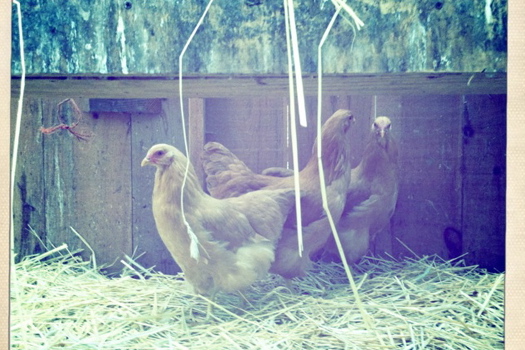
Ain't nobody here but ...
Albany residents Michael Guidice and Jen Pursley keep a handful of chickens in a coop in their Grand Street backyard. Or, they did -- until last week, when code enforcement officers knocked on their door and let them know the chickens would have to go.
Now Michael and Jen, along with 1st Ward Councilman Dominick Calsolaro and a handful of supporters, are working to change Albany's law -- and show people that keeping urban chickens can be a small step toward a sustainable downtown.
Chicken-napped!
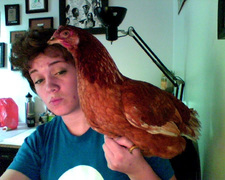 Emily contacted us last night after what appears to be a chicken-napping in her South Troy backyard. She continued via email:
Emily contacted us last night after what appears to be a chicken-napping in her South Troy backyard. She continued via email:
The kids near my back yard said it was a woman who looked like a crackhead, and she was muttering something about eating it. I drove all around my area asking people if they'd seen anyone carrying around a chicken. Most people thought I was joking.
A little girl a block or two from my house said she'd seen her round the corner onto 4th St. After a while I just had to give up. I think the most frustrating thing is that she is a pretty light chicken, not good for much food, and if someone is hungry they could stop by the Unity House or Joseph's House.
That's a photo of Emily's missing hen on the right (click for a larger view).
Emily posted a video this past summer giving a tour of her backyard chicken setup. Chickens are allowed in Troy (but not in Albany and Schenectady).
As strange as it may sound... if you see someone carrying a chicken around South Troy, please contact Emily. She's @ChateauOfADoubt on Twitter.
Earlier on AOA: Summer with Emily Armstrong
What's that in the spare room? Snake!
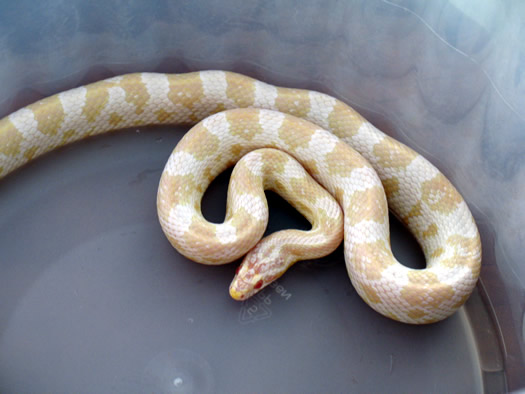
You don't mind if I stay here a few days, right?
When you rent an older apartment, you kinda have to expect a few unwanted visitors: some odd bugs, maybe a mouse -- a bat, if you're unlucky.
But a three-foot-long white snake?
No way. No. @#$%. Way.
Moose country

A moose sighted at the Saratoga Race Course in June 2009.
The state Department of Environmental Conservation reports that the number of moose in New York is "rapidly" increasing. The DEC estimates there are now about 800 moose on the loose in the North Country -- up from 500 three years ago, and as few as 50 in the 1990s.
From the press release:
As their population has grown in New England and Canada, Alces Alces, or the North American Moose, began migrating to New York in the last decade, establishing a base in the North Country. That trend has continued with increases in young and adult moose populations and increased sightings by hunters and the public at large. DEC biologists stress that the population numbers are estimated but that the growth is clear.
Apparently, this time of year is the peak season for moose activity, as amorous moose wander the landscape looking to hook up (common moose pickup line: "nice rack").
All that moose activity means you're more likely to see one this time of year -- and you're also more likely to hit one with your car. Moose are as tall as six feet at the shoulder and weigh as much as 1200 pounds, so they can do quite a bit of damage.
DEC says most of New York's moose (we really want to call them meese) are located in the Adirondacks, but there are some in the Taconics along the border with Vermont and Massachusetts.
Incidentally, the press release didn't include details about whether there's been a coincidental increase in the flying squirrel population.
Earlier on AOA:
+ Earlier this year, the DEC reported the state's bear and bald eagle populations were both growing
+ Foxes and fishers and bears, oh my!
+ Your new neighbors, the fishers
photo: Lynn Drew/NYRA Photo
Hospice care for pets?
 Facing a tough situation, Terry emails:
Facing a tough situation, Terry emails:
I have a cat that is 18 years old. He's been with me since right after I moved to the Capital District. He's been a lively, healthy guy, 18 years is well past the typical feline expiration date already, but now his clock is reaching its final ticks, and as much as I wish I didn't have to, I know that sooner rather than later I will have to do my final job as a loving, responsible caretaker for him and have him put down.
My question is this: do any of your readers know of a vet that will makes "final house calls" and come to my home? I would like to give my little guy as much security and comfort as possible on his final day, vs. putting him into a plastic crate and driving him to a vet's office and a chrome examination table.
Thank you in advance - while I grew up with pets, this is the first time I've ever "owned" this responsibility, and it just feels awful.
We haven't heard about any clinics that offer this service -- but we had a question not too long about veterinarian care for cats, and a few places got multiple recommendations (Bloomingrove, Parkside). They might be a good place to start inquiring about an in-home visit.
We hope you have suggestions for Terry.
photo: Flickr user Tambako the Jaguar
Romeo the Peacock still runs free in Schenectady
 It appears that Romeo, the peripatetic peacock of Schenectady, is still on the loose. Another sighting popped up on Craigslist yesterday, along with a photo (right).
It appears that Romeo, the peripatetic peacock of Schenectady, is still on the loose. Another sighting popped up on Craigslist yesterday, along with a photo (right).
Earlier postings indicated that peacock had left his Juliet at home on Maxon Road and gone for a walkabout in early August. It sounds like he's been sticking around the neighborhood north of Union College. This latest sighting had him at Foster Ave and Gerling Street. And a comment here on AOA last week by SB also had him sighted him on Foster.
(Thanks, Arielle!)
Earlier on AOA: Peacock on the lam in Schenectady
Dog-friendly spots
View Dog-Friendly Downtown in a larger map
Check it out: it's a map listing dog-friendly places in Saratoga, part of the Saratoga Springs Dog Friendly Downtown project. It also includes notes for each place -- for example, at Lifestyles: "We welcome dogs under 30lbs. No dirty feet please."
(This isn't new, but we came across it again the other day and don't seem to have mentioned it the first time around.)
Rebecca emailed a few months back that something like this might be good for Albany. Any interest? We could probably something together for other parts of the Capital Region.
By the way: There's already a map of Capital Region dog parks, compiled by Mark.
Goose crossing
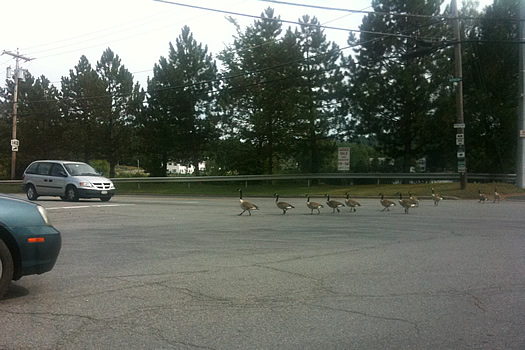
No, honk you!
Peter sent along this pic of cars stopped along Route 40 in Troy so a gaggle of geese could cross.
It makes us smile -- the way the geese look like they're just sauntering across the road. Like one of them is telling the drivers: "You honking at me? Let me tell you about honking." (Of course, we might have felt differently if we were actually there waiting for the gaggle to cross.)
Also, geese apparently don't think much of crosswalks.
(Thanks, Peter!)
Peacock on the lam in Schenectady
 A few people have posted on Craigslist this week that they've seen a peacock wandering the area around Union College in Schenectady (map). From a posting on Sunday:
A few people have posted on Craigslist this week that they've seen a peacock wandering the area around Union College in Schenectady (map). From a posting on Sunday:
Just before sunset this evening I realized one of my cats was staring insanely at the roof of my very tall garage. To my surprise, the cat was staring at an almost mature (or quite under-nourished) peacock. He seemed undisturbed by the neighbors, but took off as soon as my stupid camera made a noise.
Two other postings reported sightings north of campus, including a stroll across Van Vranken Ave. And yet another reports the peacock's name is "Romeo" and he's from a home on Maxon Road (where his "Juliet" awaits -- we so hope that posting's true).
We'd love to hear if Romeo makes it back home.
As it happens, this isn't the first peripatetic peacock in Schenectady County this summer. In June, one of the birds was on the lam in Rotterdam. [Daily Gazette]
photo (of another peacock, not Romeo): Paul Friel (Flickr user frielp)
Veterinarian care for cats?
 Emails Ryan this morning:
Emails Ryan this morning:
I found an injured stray kitten last night, but it needs medical attention and unfortunately, I cannot afford it. Do you know of any services or organizations that could help me foot the bill (or even a vet that would be willing to offer his/her services for a reduced rate)?
The one thing I'm sure about is that I don't want the kitten to be put down if it has a real chance.
The Mohawk & Hudson River Humane Society may be able to point you in the right direction, or at least give you a sense of the options. The number is 434-8128.
Anyone have suggestions for Ryan? We'll expand his question a little bit to include good vets for cats. Please share!
photo: Flickr user Tambako the Jaguar
Know of a good pet sitter or boarding?
 Kristin emails:
Kristin emails:
I know you've done posts in the past asking for reader suggestions about good haircuts, doctors, etc, and since travel season is coming up, I was wondering if you could do a post about pet sitters?
I definitely don't want to hand the keys to my apartment and the care of my cats over to someone I've randomly picked without recommendation.
We totally understand where Kristin is coming from -- knowing the office dog is well cared for makes one less thing to worry about when traveling.
This might not help Kristin's exact situation because she has cats, but Otto has vacationed at Happy Tails in Altamont. The facilities are nice and the owners were very friendly. They even got one of Otto's favorite toys back to us after we left it behind. As far as we can tell, they don't have a website, but here's a pdf brochure with contact and other info.
From what we understand, the Hounds on Hudson people, who do dog walking, also do cat visits. They seem really nice and cool. (Here's an AOA piece about them.)
Anyone have suggestions for Kristin? Or even some good boarding, pet sitting, or walking experiences that might help other people? Please share!
The Secret Photostream of Flabby Tabby
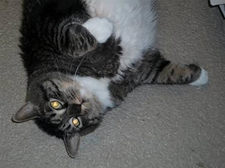 When a 30 pound cat showed up at the Mohawk and Hudson River Humane Society last week, the inevitable question was: who is this guy? And what has he been doing to get that... rotund?
When a 30 pound cat showed up at the Mohawk and Hudson River Humane Society last week, the inevitable question was: who is this guy? And what has he been doing to get that... rotund?
The answer: livin' large. After the jump, a handful of photos from The Secret Photostream of Flabby Tabby.
Extraordinarily flabby tabby found in Watervliet

Hey, I just have more to love.
Update: Don't miss The Secret Photostream of Flabby Tabby
The Mohawk and Hudson River Humane Society says someone turned in a 30-pound cat on Friday. From the org's email press release (emphasis added):
The Mohawk and Hudson River Humane Society receives thousands of stray cats every year, but on Friday afternoon they received a cat like no other. A brown tabby with a white belly is not unusual, but a cat weighing in at 30 pounds is almost unheard of. The Guinness Book of World Records no longer tracks heaviest animals because they do not want to encourage the overfeeding of pets, but their last recorded 'heaviest cat' was 46 pounds.
The cat currently being held at the Humane Society was brought in by a Good Samaritan who found her in Watervliet. It is doubtful that the cat wandered very far from home, but no one has come forward to claim her as of yet. Humane Society staff is certain that the cat belongs to someone, in part because it would be extremely difficult for a homeless cat to maintain such an unusually high weight. "We're sure someone is out looking for this cat, she is very friendly and obviously has a home" Brad Shear Executive Director said. "I just hope they think to check at the Humane Society."
The society has a page that lists found animals -- here's the entry for the flabby tabby.
Emily's chickens
Emily lives in Troy. And she has chickens. In her backyard.
She gives a little tour of her setup and talks about some background in this video she posted:
There apparently is a bit of a backyard chicken boom right now (with some doubts). Urban chicken advocates say there are a handful of reasons to have a few hens out back (you know, in addition to the eggs).
As Naomi reported last year, it is legal to keep chickens in Troy -- but not in Albany or Schenectady. (Though we've heard there might be a few chickens in Albany. And there was that rooster on the lam last year...)
One happy alpaca
This is great: Teri Conroy has posted video of Griffin, her rescued alpaca, during his first time out with the other llamas at her Wunsapana Farm in Altamont (be sure to check out the before picture):
We're pretty sure we saw him smiling.
[via Naomi]
Bumper-to-bumper elephant traffic

They walked up from the Port of Albany.
Via @woodzepper come these photos of the Ringling Bros Circus elephants making their way through downtown Albany this morning. The circus is at the TU Center this week.
The use of elephants in circuses has increasingly come under criticism in recent years. Animal advocates allege that circuses, use cruel measures to train the elephants. Ringling Bros has specifically been accused of abuse. A federal judge ruled in favor of Ringling Bros' parent company at the end of last year in a suit that alleged abuse.
PETA has been campaigning to ban the use of elephants in circuses. It recently got geek-goddess Olivia Munn to pose nude for a circus boycott ad. (Ringling Bros has accused PETA of distorting the issue.)
Recently in Albany, common councilman Anton Konev proposed a measure that would ban use of "wild or exotic" animals for shows such as circuses. The ban would also apply to rodeos.
More elephant photos after the jump.
Hoarded cats becoming ready for adoption
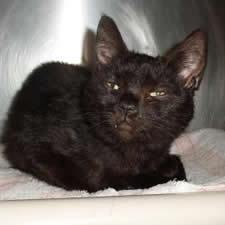 The Mohawk & Hudson River Humane Society reports that 13 of the cats rescued from the animal hoarding situation in Colonie last month are now ready for adoption. (That's Slinky, one of the cats, in the photo.) [email press release]
The Mohawk & Hudson River Humane Society reports that 13 of the cats rescued from the animal hoarding situation in Colonie last month are now ready for adoption. (That's Slinky, one of the cats, in the photo.) [email press release]
Brad Shear -- MHRHS's executive director -- wrote on his blog today about the resources involved with rescuing 52 cats from one incident:
Every animal needs to be identified and given a clean place to stay with food and water. A photo is taken of each cat and a record is created. Each cat then needs to be examined by our medical director, Dr. Sarah Madaio. You are probably familiar with a normal veterinary exam, just like the one your pet would get at her annual exam. Vets may schedule about 20 minutes for a 'healthy pet visit' - an annual exam in which your pet is coming in for annual vaccines, but may not have any other medical issues. Suffice to say, all of these cats had medical issues. So our veterinarian set up with two assistants to start the exam process that would last for days.
photo via Brad Shear
Way too many cats in one house
The Mohawk & Hudson River Humane Society reports that 52 cats were recently taken from a woman's home in Colonie. It says there are indications she may have been been keeping as many as 66 cats at the house. The society says the woman has turned herself in to Colonie police and is facing animal cruelty charges.
The org describes the situation as a case of "animal hoarding."
It says none of the cats are currently healthy enough to be adopted.
[email press release not online]
Keeping squirrels from tulips
 Emailed StickFigureMan today:
Emailed StickFigureMan today:
How do people keep the squirrels from shredding their tulips?
Every year it's the same: The squirrels wait till the buds are plump and ready to bloom, giving me hope that maybe I'll get to see my flowers this year. Then they destroy them. They don't even eat them. They shred them with their little claws and leave the petals scattered about to mock me.
I've made them sacrificial offerings of bird seed. But squirrels don't honor treaties. Last year I made habanero tea and sprayed all the tulips. Mmm, spicy, said the squirrels, as they ravaged on.
I am consumed by jealousy when I see yards bursting with tulip color. What do they know that I don't?
We suggest renting a fisher and giving those smug, treaty-breaking squirrels a run for their lives.
Perhaps you have some less radical suggestions for StickFigureMan?
Baby animals at Hancock Shaker Village
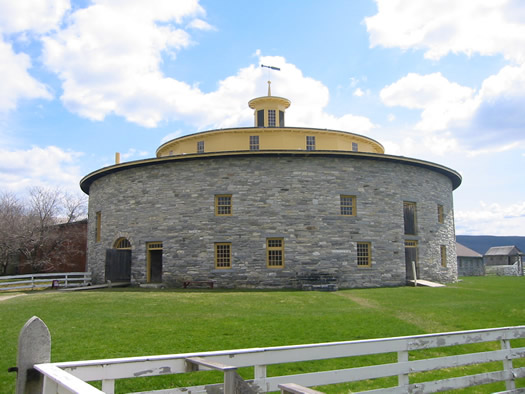
This way to the cuteness...
Growing up in Pennsylvania, every couple of years we took a compulsory school field trip to Amish Country, where we were transported back in time to find out how these traditional, religious communities lived. I get the sense the equivalent of that trip in this neck of the woods is a visit to the Hancock Shaker Village in Western Massachusetts.
Unfortunately, I didn't get chance to delve into too much of the history on my most recent visit because the real reason we were at the village was the baby animals.
And what's cuter than baby animals, you ask? Nothing, I say. And I have children.
(Yes, there are baby animals after the jump.)
Six miles from city hall: trout
Who knew: Six Mile Waterworks in Albany contains largemouth bass, sunfish, yellow perch, chain pickerel, brown bullhead and rainbow trout, according to DEC. The state will be stocking the waterway with 2,000 more "catchable size" rainbow trout Thursday .
By the way: the "Six Mile Waterworks" name comes from the fact that the Patroon Creek was dammed six miles from Albany city hall.
[via @woodzepper]
Bears and eagles

Ursus americanus
Updated Wednesday 4:55 pm
The state Department of Environment Conservation reported that the number of bears "harvested" in 2009 was the second-highest total on record. The DEC says hunters killed 1,487 black bears last year -- that's up 15 percent from the year before.
Most of the bears were killed in the Adirondacks, Catskills and Southern Tier -- but there were 21 kills in the four core counties of the Capital Region. Nineteen bears were taken in Saratoga County (including on in the Town of Saratoga) and two in Albany County (in Berne and Westerlo). That's up from 17 in the core Capital Region in 2008.
DEC says bear populations in New York State are growing.
Eagles: The DEC also reported this week that "preliminary results indicate that the bald eagle population in New York State may be at an all-time high since the state began its repopulation efforts more than 30 years ago."
Jackie spotted two bald eagles on the frozen Moreau Lake in January.
[via @woodzepper]
Earlier on AOA: Foxes and fishers and bears, oh my!
photo: Flickr user peupleloup
A dossier on our crow invaders

Don't be fooled -- there's a lot going on in that bird brain.
Troy and Albany have resumed hostilities in the War on Crows. Anti-crow trucks are trolling through Albany this week firing off flares, lasers and amplified crow distress calls. And the crows appear ready to retaliate.
So if it's going to be like this, maybe we should understand our opponent a little bit better. Here are a few crow facts to keep in mind.
Rrrawsome
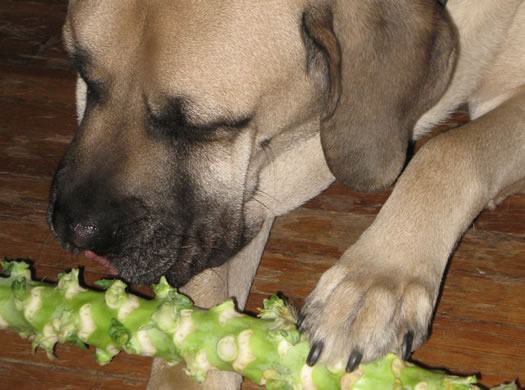
Jess' dog Junot, enjoying a Brussels sprout stalk snack
Okay, you've probaly heard of the raw food diet for people. So it's probably no surprise that the idea has spread to dog food, too. After all, their wild ancestors certainly weren't dabbling with meat grinders or industrial ovens.
Lisa Rosamino of Ballston Lake has been feeding her dogs a raw diet for over a decade now, and she runs a business -- called Rrrawsome -- that sells raw dog food ingredients locally.
Undercover with snakes and salamanders
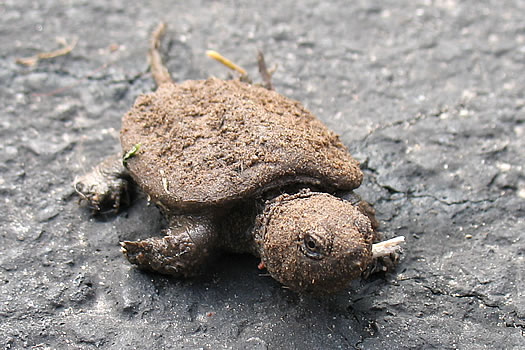
As an adult, this guy could go for as much as $45 on the black market.
Earlier this year, the state Department of Environmental Conservation announced it had busted a bunch of people as part of an undercover investigation into the black market trade of protected reptiles and amphibians.
Capt. Michael Van Durme, one of the leaders of "Operation Shellshock" will be speaking at SUNY Cobleskill tonight about his experiences with the investigation.
We figured you can't go undercover into the world of reptile and amphibian smuggling without coming away with some interesting stories, so we bounced a few questions his way. Capt. Van Durme sent back answers about microchipped turtles, priceless snakes, and nuns shopping for pythons.
Nurses say they're suing over flu shot requirement, couple accused of abandoning dogs, car registration stickers not sticking, cities try to solve crow problem, fish pedicure ban proposed
Four Albany Med nurses are filing a lawsuit against the state health commissioner over the state's flu shot requirement for health care workers. The nurses say the requirement is a violation of their civil liberties. One of them says they "don't believe in" the vaccine. The nurses could be suspended -- and later fired -- if they don't get the shot. Their attorney says they'll quit if the state doesn't drop the requirement. [TU] [CapNews9] [WNYT] [WTEN] [Troy Record]
An East Greenbush woman says the incident in which a teenager was allegedly thrown onto a bonfire last week is just part of a string of ongoing violence between two rival groups in the town. The mother of the burned teen says the alleged attack was racially motivated. [WTEN] [WTEN]
State police have arrested two people in Rensselaer County for allegedly abandoning their dogs with no food or water in a house. Police accuse the couple of moving to a new house -- and leaving the dogs behind. The dogs were found -- hungry and thirsty -- last week after a neighbor noticed them. Police say the couple had moved out weeks before. Shelter workers say it looks like the dogs will be OK. [Fox23] [CapNews9] [CBS6] [Troy Record] [WNYT]
Two Delmar women are pushing for a Bethlehem town law that would require cat owners to keep their pets in doors. The women say their neighborhood as become overrun with cat poop -- "You can't even walk around the circle without the scent of cat urine and feces knocking you down," says one of them. [TU] [Spotlight]
Clyde has been found!
 Clyde is the dog that ran off after the car he and his owner were riding in rolled over on I-90 near Albany Landfill. He was spotted a few times near a house in Guilderland recently -- and now he's been found! From a comment posted this morning by his owner, Leslie Evans:
Clyde is the dog that ran off after the car he and his owner were riding in rolled over on I-90 near Albany Landfill. He was spotted a few times near a house in Guilderland recently -- and now he's been found! From a comment posted this morning by his owner, Leslie Evans:
Clyde was caught in a trap last night next to his new home away from home in Guilderland. He was licking his chops and very pleased with himself. Thanks to everyone for their good thoughts and prayers....I'm very grateful for all the local, friends family and internet support!
Clyde will no doubt have some interesting stories for his dog friends when he returns home.
photo: Leslie Evans
Baby turtles!

What are you looking at?
On our way out to breakfast yesterday we met some unexpected neighbors. Baby turtles. Sixteen of them. In our driveway.
We saw an adult snapping turtle in the middle of our street a few months back -- it was just sitting there like it was waiting to direct traffic. It appears that it -- or maybe some other turtle -- made a stop to lay eggs in our landscaping mulch. (According to the Wikipedia entry on snapping turtles, the eggs take 9-18 weeks to hatch.)
A handful of pictures are after the jump.
Playing possum on State Street
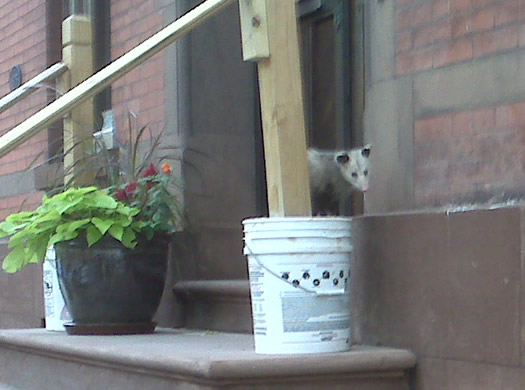
Oh, hello -- I'm just checking to see if my package arrived.
Jennifer emailed this pic to us:
I was walking down State St. [in Albany] to work this morning at about 8am, and I saw a POSSUM on the front stoop of 257 State St! Unfortunately I only had my camera phone, but you can see him pretty clearly sitting on the bucket. I used to have a possum that lived in the backyard of my building, who would eat my garbage at night, but I never thought I would see one a). in broad daylight*; and b). on the street.
Incidentally, this happens to be my landlord's house, so after snapping some photos I called him so he was aware of his visitor.
*If you can call this cloudy, overcast, nasty weather "daylight."
We also recently spotted one of these things. It was crossing a street in uptown Albany and it was huge -- like as big as a well-fed house cat.
Earlier on AOA: Foxes and fishers and bears, oh my!
(Thanks, Jennifer!)
Adirondack Animal Land: It's a zoo
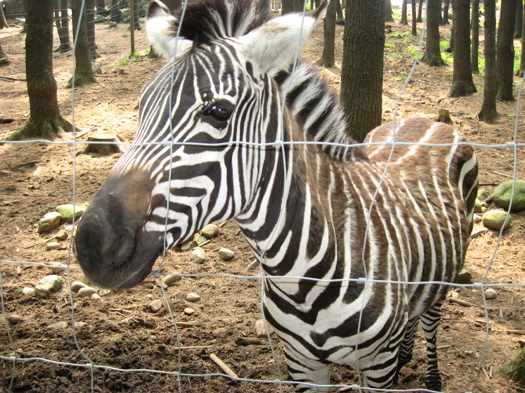
Ain't I pretty?
When the Catskill Game Farm closed its doors for good in 2006, many of us were left wondering what would fill the zoo void.
Looks to me like Adirondack Animal Land in Gloversville may be the leading contender.
Foxes and fishers and bears, oh my!

A moose at the Saratoga Race Course in June.
Where are the wild things? Lately, it seems the answer is here. And by here, we mean our backyard. And your backyard.
Over the last month, there have been moose sightings in Saratoga and East Greenbush, a bear spotted in Troy and reports of rabid foxes. Every few weeks someone drops into AOA to post a comment about a fisher sighting. And we seem to be hearing about coyotes a lot more, too.
So, what's going on? We called up Roland Kays, the mammal curator at the New York State Museum, for some answers. He studies urban wildlife.
Roland says some of these sightings are probably just part of the cycle of young animals heading out on their own for the first time. But he says there's a bigger story here, too: wild animals are moving into our neighborhoods. And that's a good thing.
Shopping with sheep
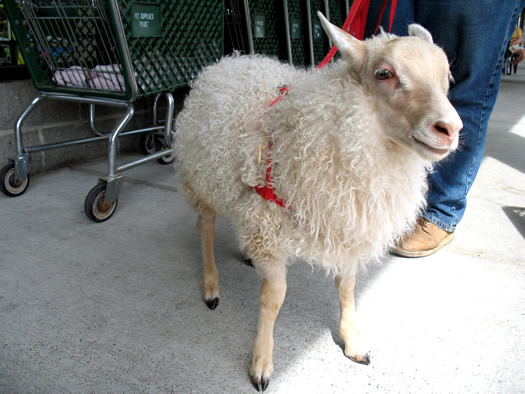
Alas, Ba Ba did not say "baaa baaa" while we were there.
This is Ba Ba. He's a six-week-old sheep from Krumkill Stables.
Ba Ba and his person, Barbara Shuefelt, were at the University Plaza on Western Ave in Albany on Friday to run some errands -- including a stop at the Pets Supplies Plus there. Yep, he went into the store, too.
Barbara has been taking care of Ba Ba since he was orphaned at four days old. The sheep has a big summer ahead of him -- he'll be taking part in Krumkill's summer camp.
A few more pics of Ba Ba are after the jump.
Earlier on AOA: Follow that horse
Stella!
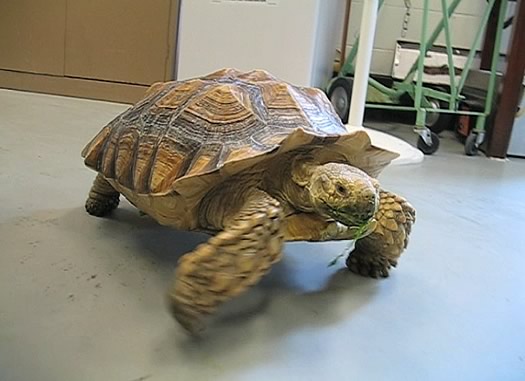
The name Stella caused some gender confusion early in his life.
This is Stella.
He's a 30something-year-old sulcata tortoise. He keeps tabs on one of the biology labs at Union College.
Stella ended up at Union about five years ago when a guy called up the the bio department to ask if they were interested in a tortoise (they were). Stella could be at Union for a long time to come -- sulcatas can live to be more than 50 years old.
He -- yep, Stella is a guy -- now patrols his bio lab (a baby gate keeps him from wandering out into the hall), munching on hay and the occasional grape. He's become a bit of a celebrity -- campus visitors (for example, us) actually stop by to see him. We didn't get the sense that the fame had gone to his head.
Video of Stella in action is after the jump.
Elephants in Albany
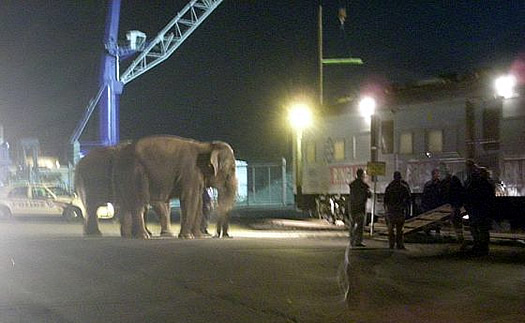
Where's their luggage? In their trunks.
Melissa snapped this pic of the circus elephants being unloaded late last night at the Port of Albany. As she emailed: "It was pretty neat!"
The elephants only had a short trip here -- they were coming from Rochester.
(Thanks, Melissa!)
Moo-vin' on up
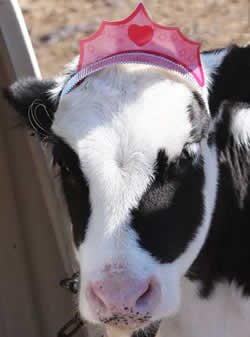 The story of SUNY Cobleskill's twittering cow, C. Abunga, has finally been told:
The story of SUNY Cobleskill's twittering cow, C. Abunga, has finally been told:
The young Holstein, a sworn vegetarian, loves alfalfa sprouts, maple syrup, veggie lasagna, mesculin, arugula, and cheese, claiming "it's like mother's milk." In addition to being a foodie, C. Abunga occupies her time like most other teenagers. She secretly wishes Joe of the Jonas Brothers and Taylor Swift would get back together. She plays the Wii (noting she "rocks Wii Play's racing cow game"). She dreams of moving to Hollywood to become a Happy California Cow and put her hoof prints on the Walk of Fame.
"Have you seen those girls?!" exclaimed C. Abunga. "I mean they're like four legged versions of Marilyn Monroe!"
Noted: C. Abunga has a Chinese pen pal named Mu Cao.
Paterson says stimulus money will prevent soda and iTunes tax, salt water may have caused manhole explosions, police say guy had pot farm in attic, Troy corned beef factory closes
David Paterson says federal stimulus money will cover the budget hole that was to be filled by new taxes on items such as soda and digital downloads. Of course, now that money won't be able to cover other holes -- and it appears chances are now greater that there will be new taxes on households making at least $250,000. [TU] [AP/Daily Gazette]
The Schenectady School District superintendent says district officials never knew about a letter Steven Raucci, the district employee charged with arson and terrorism, allegedly sent to an employee urging her to be "attractive, sensitive and classy with a touch of sexiness." A lawsuit by a former district employee alleges that Raucci was a friend of the district's HR director. The city's board of education will meet tonight to talk about Raucci's future with the district. [TU] [Daily Gazette] [Daily Gazette]
National Grid says salt water runoff may have corroded the underground transmission lines that caught fire this week in Albany. [TU]
According to the NYCLU, three Albany neighborhoods with six percent of the city's population accounted for 25 percent of the adults sent to prison in 2005 -- and almost half of those people were convicted on drug crimes. The org was publicizing the data to protest the Rockefeller Drug Laws. [TU] [TU] [NYCLU]
Chewing the cud with Paul Tonko

What, your congressperson hasn't hugged you?
Paul Tonko was in Cobleskill yesterday -- and he took some time out to stop by SUNY Cobleskill for a visit with new Twitter star C. Abunga.
photo: SUNY Cobleskill
Your new neighbors, the fishers
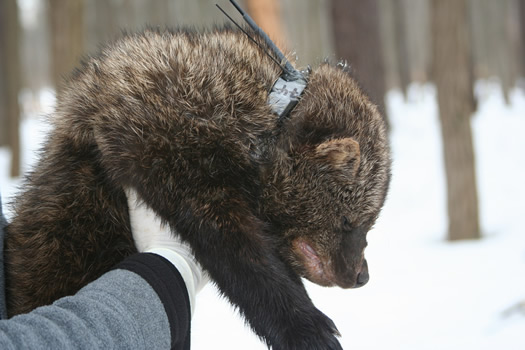
Bernard's new around here.
That furry guy in the picture above is a fisher. His name is Bernard. He was caught by some scientists in the Albany Pine Bush recently as part of research into why he and his fisher friends have decided to take up residence in suburban parts of this area (they've been spotted around Albany and Saratoga counties).
What, you've never heard of fishers? Very few people have. The animals were extraordinarily rare in this area as recently as the 1990s.
Intrigued by our new neighbors, we called up Roland Kays this week. He's the curator of mammals at the New York State Museum and he's leading the research project that captured Bernard.
We talked with Roland about fisher mysteries, coked up wolverines, cat murders, squirrel horror movies and "the landscape of fear."
Local governments line up stimulus projects, sniping in the Governor's office, DA says 40-year-old case will be hard to prosecute, group trying to raise money for cat's heart surgery
Local governments have quite the wish list lined up for the federal stimulus money that could be on they way. The cities of Albany, Schenectady and Troy combined have more than $600 million of proposed projects. On the list: a new city hall for Troy, money for the Albany convention center, and a new rail line connecting Schenectady and Albany. [TU] [Daily Gazette]
As Kirsten Gillibrand becomes more of a "Democratic team player" in the Senate, constituents around Saratoga say they feel betrayed. [Newsday] [NYT]
The state worker unions have been meeting with the Department of Civil Service to discuss procedures for layoffs. There has been no official word that mass layoffs are in the works. [TU]
The chatter around the Capitol: David Paterson's staff is incompetent, fighting with itself over stuff like office space.
If this keeps up, Panda might need an agent
 Ann Edie, the Guilderland woman who uses a miniature horse -- named Panda -- as a guide animal, was on Rachael Ray's talk show yesterday (video).
Ann Edie, the Guilderland woman who uses a miniature horse -- named Panda -- as a guide animal, was on Rachael Ray's talk show yesterday (video).
The segment shows Edie and Panda walking around their neighborhood, strolling through Crossgates and playing fetch. Edie says in the segment that sometimes people think Panda is just a big dog.
Edie and Panda were recently featured in a NYT Mag story about assistance animals.
We saw a guide-horse-in-training this past summer on Broadway in Saratoga.
(Thanks, Jess)
Guide horses in the next aisle
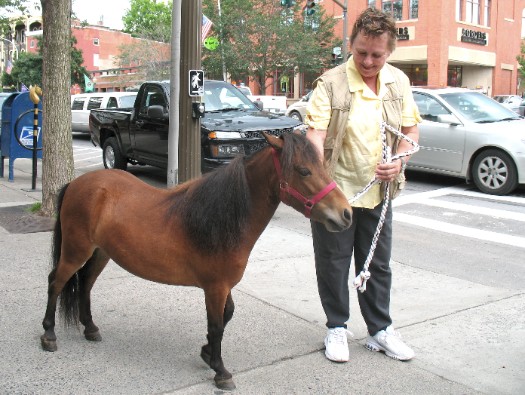
We saw Mexicali Rose, a guide horse in training, walking down Broadway last summer.
Jess sent along this story from the NYT Mag about the proliferation of service animals -- it opens with the story of a blind woman in Albany who uses a guide horse:
There are no sidewalks in Edie's neighborhood, so Panda led her along the street's edge, maneuvering around drainage ditches, mailboxes and bags of raked leaves. At one point, Panda paused, waited for a car to pass, then veered into the road to avoid a group of children running toward them swinging glow sticks. She led Edie onto a lawn so she wouldn't hit her head on the side mirror of a parked van, then to a traffic pole at a busy intersection, where she stopped and tapped her hoof. "Find the button," Edie said. Panda raised her head inches from the pole so Edie could run her hand along Panda's nose to find and press the "walk" signal button.
Check out this pic of Edie and Panda in Staples.
We'd never heard of using horses this way until this past summer. We were sitting in the window of the Uncommon Grounds in Saratoga when we saw a woman cross the street with the tiniest horse we'd ever seen.
(Thanks, Jess!)
Follow that horse
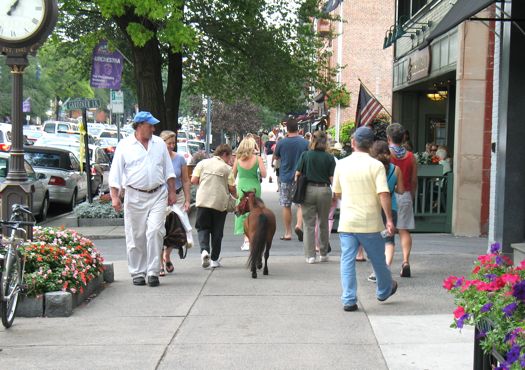
Yep, you just walked past a horse.
Everyone's heard of guide dogs, but how about a guide horse? We didn't know such a thing existed until we saw this candidate today on Broadway in Saratoga. "Mexicali Rose" was getting a tryout for guide horse training.
Mexicali's owner, Becky Montano, raises American Miniature horses on a farm near Gloversville. She says that horses are natural guide animals because as prey -- not predators -- they're always on the lookout for potential dangers. And she says that the mini horses are a good alternative for people who are allergic dogs, or are maybe not comfortable having dogs around.
More pics of Mexicali after the jump.








... said KGB about Drawing: What's something that brought you joy this year?